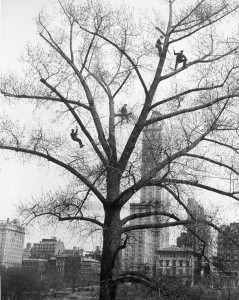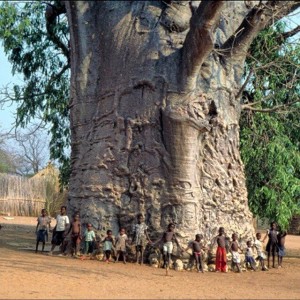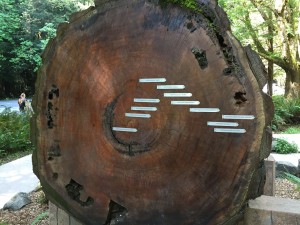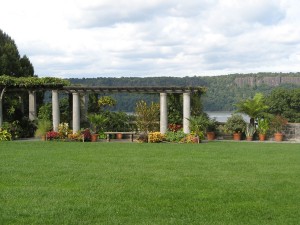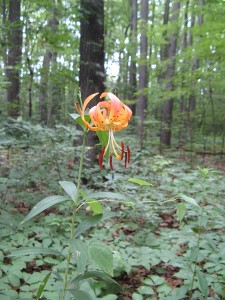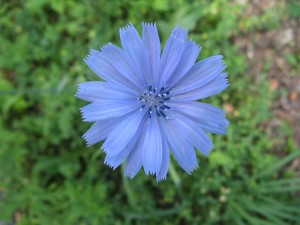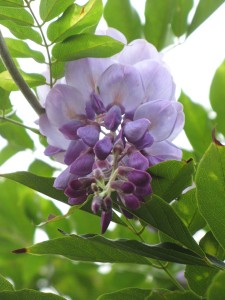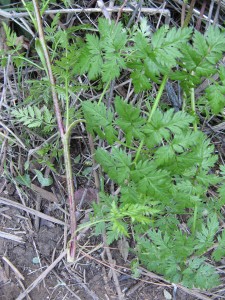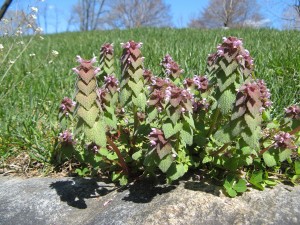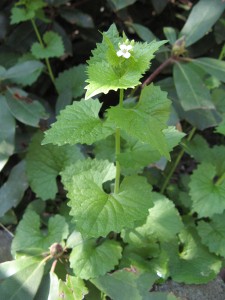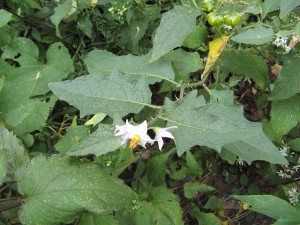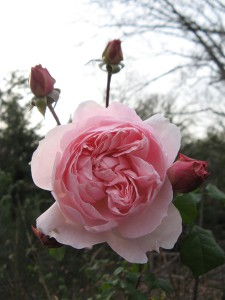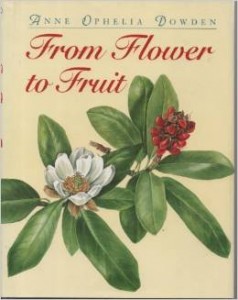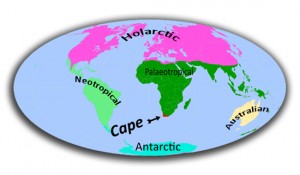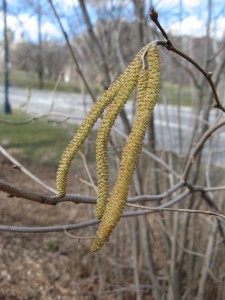TWO CLASSES – one in midtown the other in the Bronx
BEST DAY THIS WNTER – FEB 21, 2018 – 78 DEGREES
A DOZEN FLOWERS COME INTO BLOOM
INCLUDING 3 CROCUSES – WINTER JASMINE, KOREAN RHODODENDRON
WINTER ACONITE, FORSYTHIA, PRIMROSE, LOTS OF SNOWDROPS, DAFFODIL LEAVES, ALLIUM, ETC
CORNUS MAS, HELLEBORES
FIRST CLASS – MID-MANHATTAN – MONDAY and THURSDAY EVENINGS – BEGINNING JANUARY 8TH – at 6:15
SEVERAL WITCH HAZELS
SECDOND CLASS – NEW YORK BOTANICAL GARDEN – THURSDAY MORNINGS – BEGINNING JANUARY 11TH at 10 am
December 4, 1856: “My first botany, as I remember, was Bigelow’s “Plants of Boston and Vicinity,” which I began to use about twenty years ago, looking chiefly for the popular names and the short references to the localities of plants, even without regard to the plant. I also learned the names of many, but without using any system, and forgot them soon. I was not inclined to pluck flowers; preferred to leave them where they were, liked them best there. I was never in the least interested in plants in the house. But from year to year we look at Nature with new eyes. About half a dozen years ago I found myself again attending to plants with more method, looking out the name of each one and remembering it. I began to bring them home in my hat, a straw one with a scaffold lining to it, which I called my botany-box. I never used any other, and when some whom I visited were evidently surprised at its dilapidated look, as I deposited it on their front entry table, I assured them it was not so much my hat as my botany-box. I remember gazing with interest at the swamps about those days and wondering if I could ever attain to such familiarity with plants that I should know the species of every twig and leaf in them, that I should be acquainted with every plant (excepting grasses and cryptogamous ones), summer and winter, that I saw. Though I knew most of the flowers, and there were not in any particular swamp more than half a dozen shrubs that I did not know, yet these made it seem like a maze to me, of a thousand strange species, and I even thought of commencing at one end and looking it faithfully and laboriously through till I knew it all. I little thought that in a year or two I should have attained to that knowledge without all that labor. Still I never studied botany, and do not today systematically, the most natural system is still so artificial.” Henry David Thoreau
————————————————————-
WELCOME TO The New York Botanical Garden’s HRT 300 – INTRODUCTION TO PLANT SCIENCE…..Winter 2018
—————————————————————————————————————————————
CONTENTS……selected, below…..
Instructions on keeping a botany journal
Instructions on making a set of plant pressings
Plants by the numbers
Some things to remember about plants, articles to read, etc.
What’s in your journal? – Some October entires by Henry David Thoreau
10 plant families to learn
Plant classification
Books, etc.
Plant hormones…………………scroll down
Plant essential elements………..scoll down
—————————————————————————————————————————————
INSTRUCTIONS ON KEEPING A BOTANY JOURNAL
1 Use a notebook small enough to carry in your pocket or pack.
2 Use a pen or in very cold weather when pens often won’t write, use a pencil.
3 Allow just one page per day and date each page.
The journal is a way to keep the class in mind every day, and keep plants front and center.
4 Write something about something botanical you have observed that day, preferably outdoors.
It can be about trees or shrubs or “weeds” or ferns, mosses, or fungi.
If you follow a similar route every day, watch for differences in the plants you notice..
5 Your journal will be examined and graded at the end of the course.
For example, the Witch Hazel (Hamamelis virginiana) is in bloom (New Year’s Day). Whether you know its name or not, if you notice a shrub or small tree in bloom, especially “out of season,” it’s an observation worth making. You can describe the flower or the general shape of the plant, or photograph it and note in your journal that you took its picture. Look for changes over time; the flowers will fade, fruit will develop, leaf buds might become more conspicuous. These are all observations of a botanical nature that are appropriate for journal entries.
At some point this winter, maybe today, snowdrops (Galanthus nivalis), a bulblike white flower will start to bloom in sunny exposures. An ornamental flowering cherry will come into bloom in late fall or even mid-winter, especially in parks and gardens in urban/suburban areas, and this is something to observe and note. For example, if you see a small tree in bloom, and the flowers are small, white to pinkish, and have as many as a dozen petals, and the tree is quite bare of leaves, it’s the Japanese Fall Cherry (Prunus x subhirtella “Autumnalis”). See it once and you’ll recognize it elsewhere. Photograph it and you can compare the photo with the next one you see in bloom. Keep your journal going after the course is over and you can keep track of this tree’s flowering during the year – it has a spring flowering also!
If you find unusual looking fruits or nuts on the ground under or near a tree or shrub, it might be something worth investigating and writing up in your journal. It can raise questions you might never have thought of asking before, like why are there so many acorns underfoot this winter? Or, why does the honey-locust tree (Gleditsia…..) produce such long pods that no animal seems interested in eating? Or why are so many honey locust trees so well armed with thorns that are both sharp and branched: what is it defending itself against?
Keeping a journal opens your eyes and minds to what’s going on with all the plants around you. What are they doing, and when and how are they doing it, and why? This is studying botany as it reveals itself to you. And it’s yours for the asking.
Henry David Thoreau wrote a daily journal, primarily about plants in the Concord, Mass. Area, between 1850 and 1860. His entries are still useful today, even in New York City. See my website, Garylincoff.com, and the pages “Thoreau’s Journal” or “HRT 300: Intro to Plant Science,” for examples from his journal.
Example of a Journal entry by Henry David Thoreau:
January 9, 1853: “This is the third warm day, the warmest of all. The Andromeda Ponds methinks look redder. I walked through one. The lowest growth is sphagnum, fresh, large, and handsome, some green, some red, into which occasionally I slumped nearly a foot. Some lambkill is mixed with the Andromeda. A few islands of gray high blueberry bushes, with round red buds, rise here and there mixed with the panicled Andromeda, large cotton-grass, now prostrate, etc. The pitcher-plant leaves are still for the most part green and uninjured here, though full of ice. Many have holes in their sides, through which insects appear to have eaten out. However, the external ear or handle is also eaten through, so the agent may have been without. I see a dogbane sickle-shaped seed-vessel which has not discounted. I open it and let the seeds fly…We have not yet had snow more than one inch deep!!! As I climbed the Cliff, I paused in the sun and sat on a dry rock, dreaming. I thought of those summery hours when time is tinged with eternity, – runs into it and becomes of one stuff with it. How much, – how, perhaps, all – that is best in our experience in middle life may be resolved into the memory of our youth! I remember how I expanded…Pulling up the johnswort on the face of the Cliff, I am surprised to see the signs of unceasing growth about the roots, – fresh shoots two inches long, white with red leaflets, and all the radical part quite green…..The crowfoot buds – and how many beside! – lie unexpanded just beneath the surface. May I lead my life the following year as innocently as they!…How innocent are Nature’s purposes! How unambitious! Her elections are not Presidential. The springing and blossoming of this flower do not depend on the votes of men.”
January 22, 1852: “Perhaps this is the main value of a habit of writing, of keeping a journal, – so that we remember our best hours and stimulate ourselves.”
——————————————————————————————
INSTRUCTIONS ON MAKING A SET OF PLANT PRESSINGS
1 You will make a set of a dozen plant pressings which will be due at the end of the course.
2 On a blank piece of paper 8 ½ x 11” or larger, rag quality or not…
3 Place a single plant that you have dried in such a way that it lies flat and spread out. (composition counts)
4 Attach the plant to the page with glue or tape of some kind. It is only necessary to use enough glue or tape to hold plant on paper.
5 Place in a lower corner your name, the name of the plant (scientific and common names), where you collected it, and the date…..that is, 4 items to include on each pressing page.
[Instructions for drying plants: Place a plant on top of a piece of plain paper towel, and cover it with another piece. Place this “sandwich” on a flat surface and place books on top of it. Leave for two or three days. Then carefully transfer your dried plant to a piece of pressing paper, to which you will then affix glue or tape, and note your name, the plant’s name, and when and where collected.]
For “pressing’ three dimensional objects, like branches or fruits or nuts, the dried objects can be affixed to paper with glue or tape, or the fruits or nuts can be housed inside a small box made of a folded 3 x 5” or 4 x 6” notecard.
Plant pressings can be made any time of year, even over winter.
They are relatively easy to make, and well-made pressings can last forever.
Many of the great botanical explorers of the past couple of centuries made such pressings, and they are being made every day by contemporary botanists and travelers around the world. Over a million of these are stored in the New York Botanical Garden Herbarium
It’s a skill-set easy to learn and one that, should you find yourself some day in some out of the way place, whether it’s Papua New Guinea or southern Staten Island, you just might discover a plant that is new to science. Bring a pressing of it back to the New York Botanical Garden, and if it proves to be new to science, you just might become famous overnight!
There are 2 kinds of pressings that can be made in this course over-winter. One is a two dimensional pressing of leaves and, maybe, accompanying twigs. The other is something decidedly three dimensional, like pieces of tree or shrub branching, or fruits or nuts from these plants.
John Muir, the late 19th and early 20th Century botanist explorer, the man who almost single-handedly helped to establish our National Park system, pressed thousands of plants on his excursions in California and elsewhere, and these are still intact today, and proved very useful in helping botanists understand the flora of an area and its distribution.
A book about his pressings, called “Nature’s Beloved Son,” by Gisel Joseph, is available in the Library or on Amazon.com.
——————————————————————————————————————————————–
——————————————————————————————————————————————–
PLANTS BY THE NUMBERS…….ballpark figures at best!
Approximately, how many native species of plants can be found in the United States?
16,500 Flowering Plants (Angiosperms)
122 Conifers (Gymnosperms)
658 Ferns
1,465 Mosses and Liverworts
—————————————————————–
Approximately how many species of plants, mushrooms, and algae can be found on Planet Earth today? [What was the ratio at different periods of geologic history?]
350,000 Flowering Plants (Angiosperms)
1,052 Conifers (Gymnosperms)
12,000 Ferns & Horsetails
16,236 Mosses
17,000 Lichens
31,500 Mushrooms (?)
More than 35,000 Basidiomycetes
More than 65,000 Ascomycetes
Plus other groups of fungi !
13,513 Red, Green and Brown “Algae”
—————————————————————-
Some easy things to remember about plants……………..
There are 4 groups (phyla) in the Plant Kingdom: the mosses (Bryophytes), the ferns (Pteridophytes), the conifers (Gymnosperms) and the flowering plants (Angiosperms)
There are about 15,000 mosses, 15,000 ferns, 700 conifers, and 250,000 or so flowering plants.
Other Kingdoms of life are intimately involved in the lives of plants: Bacteria are essential for “fixing” atmospheric nitrogen (primarily in the Bean Family, the Fabaceae).
The Green Algae (now often placed in the Kingdom Protista) are the ancestors of all our plants. Other algae, like the red and brown, are not.
The Kingdom Fungi are crucial for plant health and survival – both as underground root associates (mycorrhizae) and as endophytes living within plant tissues.
The Animal Kingdom provides the majority of our plants with pollinators and seed dispersers. Without these “helpers” most of our plants would not exist.
We live in an oak dominant forest that extends north to southern Canada and south to Colombia, S.A., and west to about Lawrence, Kansas. That’s the eastern flora zone.
There are 3 important things roots do for plants: they anchor plants. Water and nutrients enter plants through their roots. Roots are food storage places for plants.
There are 4 important things water does inside plants: hydration, temperature control, cleansing (water is not stagnant but moves) and photosynthesis
Flowering Plants can be divided into 2 groups: the monocots (grasses, palms, orchids) and dicots (all woody plants and most flowers)
Monocots can be recognized by their spear-shaped leaves that are parallel-veined, and by their flowers which have 3 or 6 petals.
Dicots can be recognized by their leaves that have a mid-rib and side veins, and by their flowers which are typically 4 or 5 petalled.
NOTE: I post on Facebook every day. If you want to follow what I find worth sharing about plants and mushrooms, please check my Facebook postings.
————————————————————————————————————
WHAT’S IN YOUR JOURNAL ? (Here are some entries from Henry David Thoreau )
THOREAU’S JOURNAL: Daily Quotes
————————————————————
JANUARY
January 31, 1854: “We too have our thaws. They come to our January moods, when our ice cracks, and our sluices break loose. Thought that was frozen up under stern experience gushes forth in feeling and expression. There is a freshet which carries away dams of accumulated ice. Our thoughts hide unexpressed, like the buds under their downy or resinous scales; they would hardly keep a partridge from starving. If you would know what are my winter thoughts look for them in the partridge’s crop. They are like the laurel buds, – some leaf, some blossom buds, – which, though food for such indigenous creatures, will not expand into leaves and flowers until summer comes.”
January 30, 1854: “The winter, cold and bound out as it is, is thrown to us like a bone to a famishing dog, and we are expected to get the marrow out of it. While the milkman in the outskirts is milking so many scores of cows before sunrise these winter mornings, it is our task to milk the winter itself. It is true it is like a cow that is dry, and our fingers are numb, and there is none to wake us up. Some desert the field and go into winter quarters in the city. They attend the oratorios, while the only music that we countrymen hear is the squeaking of the snow under our boots. But the winter was not given to us for no purpose. We must thaw its cold with our genialness. We are tasked to find out and appreciate all the nutriment it yields. If it is a cold and hard season, its fruit, no doubt, is the more concentrated and nutty. It took the cold and bleakness of November to ripen the walnut, but the human brain is the kernel which the winter itself matures. Not till then does its shell come off. The seasons were not made in vain. Because the fruits of the earth are already ripe, we are not to suppose that there is no fruit left for winter to ripen. It is for man the seasons and all their fruits exist. The winter was made to concentrate and harden and mature the kernel of his brain, to give tone and firmness and consistency to his thought. Then is the great harvest of the year, the harvest of thought. All previous harvests are stubble to this, mere fodder and green crop. Now we burn with a purer flame like the stars; our oil is winter-strained. We are islanded in Atlantic and Pacific and Indian Oceans of thought, Bermudas, or Friendly or Spice Islands.”
January 29, 1860: “Not only the Indian, but many wild birds and quadrupeds and insects welcomed the apple tree to these shores. As it grew apace the bluebird, robin, cherry-bird, kingbird, and many more came with a rush and built their nest in it, and so became orchard-birds. The woodpecker found such a savory morsel under its bark that he perforated it in a ring quite round the tree, a thing it had never done before. It did not take the partridge long to find out how sweet its buds were, and every winter day she flew and still flies from the wood to pluck them, much to the farmer’s sorrow. The rabbit too was not slow to learn the taste of its twigs and bark. The owl crept into the first one that became hollow, and fairly hooted with delight, finding it just the place for him. He settled down into it, and has remained there ever since. The lackey caterpillar saddled her eggs on the very first twig that was formed, and it has since divided her affections with the wild cherry; and the canker-worm also in a measure abandoned the elm to feet on it. And when the fruit was ripe, the squirrel half carried, half rolled, it to his hole, and even the musquash crept up the bank and greedily devoured it; and when it was frozen and thawed, the crow and jay did not disdain to peck it. And the beautiful wood duck, having made up her mind to stay a while longer with us, has concluded that there is no better place for her too.”
January 29, 1852: “We must be very active if we would be clean and live our own life, and not a languishing and scurvy one. The trees, which are stationary, are covered with parasites, especially those which have grown slowly. The air is filled with the fine sporules of countless mosses, algae, lichens, fungi, which settle and plant themselves on all quiet surfaces. Under the nails and between the joints of the fingers of the idle, flourish crops of mildew, algae, and fungi, and other vegetable sloths, though they may be invisible, – the lichens where life still exists, the fungi when decomposition has begun to take place. And the sluggard is soon covered with sphagnum. Algae takes root in the corners of his eyes, and lichens cover the bulbs of his fingers and his head, etc., etc., the lowest forms of vegetable life. This is the definition of dirt. We fall a prey to others of nature’s tenants, who take possession of the unoccupied house. With the utmost inward activity we have to wash and comb ourselves beside, to get rid of the adhering seeds. Cleanliness is by activity not to give any quiet shelf for the seeds of parasitic plants to take root on.”
January 28, 1852: “Our life should be so active and progressive as to be a journey. Our meals should all be of journey-cake and hasty pudding. We should be more alert, see the sun rise, not keep fashionable hours, enter a house, our own house, as a khan, a caravansary. At noon I did not dine; I ate my journey-cake. I quenched my thirst at a spring or a brook. As I sat at the table, the hospitality was so perfect and the repast so sumptuous that I seemed to be breaking my fast upon a bank in the midst of an arduous journey, that the water seemed to be a living spring, the napkins grass, the conversation free as the winds; and the servants that waited on us were our simple desires……About Brister’s Spring the ferns, which have been covered with snow, and the grass are still quite green. The skunk-cabbage in the water is already pushed up, and I find the pinkish head of flowers within its spathe bigger than a pea.”
January 27, 1860: “When you think that your walk is profitless and a failure, and you can hardly persuade yourself not to return, it is on the point of being a success, for then you are in that subdued and knocking mood to which Nature never fails to open.”
January 26, 1856: “When I took the ether my consciousness amounted t this: I put my finger on myself in order to keep the place, otherwise I should never have returned to this world.”
January 25, 1858: “What a rich book might be made about buds, including, perhaps, sprouts! – the impregnable, vivacious willow catkins, but half asleep under the armor of their black scales, sleeping along the twigs; the birch and oak sprouts, and the rank and lusty dogwood sprouts; the round red buds of the blueberries; the small, pointed red buds, close to the twig, of the panicled andromeda; the large yellowish buds of the swamp-pink, etc. How healthy and vivacious must he be who would treat of these things.”
JANUARY 25, 1860: “In keeping a journal of one’s walks and thoughts it seems to be worth while to record those phenomena which are most interesting to us at the time. Such is the weather. It makes a material difference whether it is foul or fair, affecting surely our mood and thoughts.”
January 24, 1855: “I am reading William Wood’s ‘New England’s Prospect.’ He left New England August 15th, 1633…The wild meadow-grasses appear to have grown more rankly in those days. He describes them as ‘thick and long, as high as a man’s middle; some as high as the shoulders.’ Strawberries too were more abundant and large before they were so cornered up by cultivation, ‘some being two inches about; one may gather half a bushel in a forenoon;’ and no doubt many other berries were far more abundant, as gooseberries, raspberries, and especially currants, which last so many old writers speak of, but so few moderns find wild.”
JANUARY 23, 1854: “What is a winter unless you have risen and gone abroad frequently before sunrise and by starlight?”
January 22, 1852: “Perhaps this is the main value of a habit of writing, of keeping a journal, – so that we remember our best hours and stimulate ourselves.”
January 21, 1856: “Four men, cutting at once, began to fell the big elm at 10am, went to dinner at 12, and got through at 2:30pm. They used a block and tackle with five falls, fastened to the base of a buttonwood, and drawn by a horse, to pull it over the right way; so it fell without harm down the road. One said he pulled twenty turns. I measured it at 3pm, just after the top had been cut off….it was about 108 feet high…It was solid quite through at butt (excepting 3 inches in middle), though somewhat decayed within, and I could count pretty well 105 rings, to which add 10 more for the hollow and you have 115.”
January 20, 1852: “I do not know but it is too much to read one newspaper a week, for I now take the weekly Tribune, and for a few days past, it seems to me, I have not dwelt in Concord: the sun, the clouds, the snow, the trees say not so much to me. You cannot serve two masters. It requires more than a day’s devotion to know and to possess the wealth of a day. To read of things distant and sounding betrays us into slighting these which are then apparently near and small. We learn to look abroad for our mind and spirit’s daily nutriment, and what is this dull town to me? What are these plain fields and the aspects of this earth and these skies? All summer and far into the fall I unconsciously went by the newspapers and the news, and now I find it was because the morning and the evening were full of news to me. My walks were full of incidents. I attended not to the affairs of Europe, but to my own affairs in Concord fields. To see the sun rise or go down every day would preserve us sane forever, – so to relate ourselves, for our mind’s and body’s health, to a universal fact.”
January 19, 1856: “In Oliver N. Bacon’s ‘History of Natick,’ (Mass.), it is said that, of phanogamous (flowering) plants, ‘upwards of 800 species were collected from Natick soil in three years’ time, by a single individual.’ I suspect it was Bacon the surveyor. There is given a list of those which are rare in that vicinity. Among them are the following which I do not know to grow here: Actaea rubra, Asclepias tuberosa, Alopecurus pratensis, Corallorhiza odontorhiza, Drosera filiformis, Ledum latifolium, Malaxis lilifolia (what in Gray?), Sagina procumbens. Among those rare there but common here are Calla virginica, Glecoma hederacea, Iris prismatica, Lycopus virginicus, Mikania scandens, Prunus borealis, Rhodora Canadensis, Xyris aquatica, Zizania aquatica. They, as well as we, have Equisetum hyemale, Kalmia glauca, Liatris scariosa, Ulmus fulva, Linnea borealis, Pyrola maculata, etc., etc.”
January 18, 1856: “Analyzed a nest which I found January 7th in an upright fork of a red maple sapling on the edge of Hubbard’s Swamp Wood, north side, near river, about eight feet from the ground, the deep grooves made by the twigs on each side. It may be a yellowbird’s. Extreme breadth outside, three inches; inside, one and a half. Extreme height outside, three inches; inside, one and five eighths; sides, three quarters of an inch thick. It is composed of seven principal materials (I name the most abundant first; I mean most abundant when compressed.) 1. Small compact lengths of silvery pappus about seven eights of an inch long, perhaps of erechtites, one half inch deep and nearly pure, a very warm bed, chiefly concealed, just beneath the lining inside. 2. Slender catkins, often with the buds and twig ends (of perhaps hazel), throughout the whole bottom and sides, making it thick but open and light, mixed with 3. Milkweed silk, i.e., fibres like flax, but white, being bleached, also in sides and rim, some of it almost threadlike, white with some of the dark epidermis. From the pods? 4. Thin and narrow strips of grape-vine bark, chiefly in the rim and sides for three quarters of an inch don, and here and there throughout. 5. Wads of apparently brown fern wool, mixed with the last three. 6. Some finer pale-brown and thinner shreds of bark within the walls and bottom, apparently not grape. If this were added to the grape, these five materials would be not far from equally abundant. 7. Some very fine pale-brown wiry fibres for a lining, just above the pappus and somewhat mixed with it, perhaps for coolness, being springy….”
January 17, 1852: “It appears to me that at a very early age the mind of man, perhaps at the same time with his body, ceases to be elastic. His intellectual power becomes something defined and limited. He does not think expansively, as he would stretch himself in his growing days. What was flexible spa hardens into heartwood, and there is no further change. In the season of youth, methinks, man is capable of intellectual effort and performance which surpass all rules and bounds; as the youth lays out his whole strength without fear or prudence and does not feel his limits. It is the transition from poetry to prose. The young man can run and leap; he has not learned exactly how far, he knows no limits. The grown man does not exceed his daily labor. He has no strength to waste.”
January 16, 1852: “I see that to some men their relation to mankind is all-important. It is fatal in their eyes to outrage the opinions and customs of their fellow-men. Failure and success are, therefore, never proved by them by absolute and universal tests. I feel myself not so vitally related to my fellow-men. I impinge on them but by a point on one side. It is not a Siamese-twin ligature that binds me to them. It is unsafe to defer so much to mankind and the opinions of society, for these are always and without exception heathenish and barbarous, seen from the heights of philosophy. A wise man sees as clearly the heathenism and barbarity of his own countrymen as those of the nations to whom his countrymen send missionaries. The Englishman and American are subject to equally many national superstitions with the Hindoos and Chinese. My countrymen are to me foreigners. I have but little more sympathy with them than with the mob of India or of China.”
January 15, 1853: “True words are those, as Trench says, – transport, rapture, ravishment, ecstasy. These are the words I want. This is the effect of music. I am rapt away by it, out of myself. These are truly poetical words. I am inspired, elevated, expanded. I am on the mount..…Mrs. Ripley told me this afternoon that Russell had decided that that green (and sometimes yellow) dust on the under side of stones in walls was a decaying state of Lepraria chlorina, a lichen, – the yellow another species of Lepraria. Science suggests the value of mutual intelligence. I have long known this dust, but, as I did not know the name of it, i.e., what others called it, and therefore could not conveniently speak of it, it has suggested less to me and I have made less use of it. I now first feel as if I had got hold of it.”
January 14, 1852: “When I see the dead stems of the tansy, goldenrod, johnswort, asters, hardhack, etc., etc., rising above the snow by the roadside, sometimes in dense masses, which carry me back in imagination to their green summer life, I put faintly a question which I do not yet hear answered. Why stand they there? Why should the dead corn-stalks occupy the field longer than the green and living did? Many of them are granaries for the birds. It suggests that man is not an annual. He sees the annual plants wither. Nor does his sap cease to flow in the winter as does that of the trees, though, perhaps, even he may be slightly dormant at that season. It is to most a season to some extent of inactivity. He lays up his stores, and is perhaps a little chilled. On the approach of spring there is an increased flow of spirits, of blood, in his veins. Here is a dense mass of dry tansy stems, attached still to the same roots which sustained them in summer, but what an interval between these and those. Here are no yellow disks; here are no green leaves; here is no strong odor to remind some of funerals. Here is a change as great as can well be imagined. Bare, brown, scentless stalks, with the dry heads still adhering. Color, scent, and flavor gone. We are related to all nature, animate and inanimate, and accordingly we share to some extent the nature of the dormant creatures. We all feel somewhat confined by the winter; the nights are longer, and we sleep more. We also wear more clothes. Yet the thought is not less action; perhaps it is more so.”
January 13, 1852: “Would not snow-drifts be a good study, – their philosophy and poetry? Are they not worthy of a chapter? Are they always built up, or not rather carved out of the heaps of snow by the wind passing through the chinks in the walls? I do not see yet but they are builded. They are a sort of ripple-marks which the atmospheric sea makes on the snow-covered bottom.”
January 12, 1852: “I sometimes think that I may go forth and walk hard and earnestly, and live a more substantial life and get a glorious experience; be much abroad in heat and cold, day and night; live more, expend more atmospheres, be weary often, etc., etc. But then swiftly the thought comes to me, Go not so far out of your way for a truer life; keep strictly onward in that path alone which your genius points out. Do the things which lie nearest to you, but which are difficult to do. Live a purer, a more thoughtful and laborious life, more true to your friends and neighbors, more noble and magnanimous, and that will be better than a wild walk. To live in relations of truth and sincerity with men is to dwell in a frontier country. What a wild and unfrequented wilderness that would be! What Saguenays of magnanimity that might be explored! Men talk about travelling this way or that, as if seeing were all in the eyes, and a man could sufficiently report what he stood bodily before, when the seeing depends ever on the being. All report of travel is the report of victory or defeat, of a contest with every event and phenomenon and how you came out of it. A blind man who possesses inward truth and consistency will see more than one who has faultless eyes but no serious and laborious astronomer to look through them. As if the eyes were the only part of a man that travelled!…..Nothing like a little internal activity called life – if it were only walking much in a day – to keep the eyes in good order.”
January 11, 1852: “What need to travel? There are no sierras equal to the clouds in the sunset sky. And are not these substantial enough? In a low or level country, perchance, the forms of the clouds supply the place of mountains and precipices to the eye, the grosser atmosphere makes a mountainous country in the sky. The glory of these afternoons, though the sky may be mostly overcast, is in the ineffably clear blue, or else pale greenish-yellow, patches of sky in the west just before sunset. The whole cope of heaven seen at once is never as elysian. Windows to heaven, the heavenward windows of the earth. The end of the day is truly Hesperian.”
January 10, 1854: “What you can recall of a walk on the second day will differ from what you remember on the first day, as the mountain chain differs in appearance, looking back the next day, from the aspect it wore when you were at its base, or generally, as any view changes to one who is journeying amid mountains when he has increased the distance.”
January 9, 1853: “This is the third warm day, the warmest of all. The Andromeda Ponds methinks look redder. I walked through one. The lowest growth is sphagnum, fresh, large, and handsome, some green, some red, into which occasionally I slumped nearly a foot. Some lambkill is mixed with the Andromeda. A few islands of gray high blueberry bushes, with round red buds, rise here and there mixed with the panicled Andromeda, large cotton-grass, now prostrate, etc. The pitcher-plant leaves are still for the most part green and uninjured here, though full of ice. Many have holes in their sides, through which insects appear to have eaten out. However, the external ear or handle is also eaten through, so the agent may have been without. I see a dogbane sickle-shaped seed-vessel which has not discounted. I open it and let the seeds fly…We have not yet had snow more than one inch deep!!! As I climbed the Cliff, I paused in the sun and sat on a dry rock, dreaming. I thought of those summery hours when time is tinged with eternity, – runs into it and becomes of one stuff with it. How much, – how, perhaps, all – that is best in our experience in middle life may be resolved into the memory of our youth! I remember how I expanded…Pulling up the johnswort on the face of the Cliff, I am surprised to see the signs of unceasing growth about the roots, – fresh shoots two inches long, white with red leaflets, and all the radical part quite green…..The crowfoot buds – and how many beside! – lie unexpanded just beneath the surface. May I lead my life the following year as innocently as they!…How innocent are Nature’s purposes! How unambitious! Her elections are not Presidential. The springing and blossoming of this flower do not depend on the votes of men.”
January 8, 1860: “After December all weather that is not wintry is springlike. How changed are our feelings and thoughts by this more genial sky! When I get to the railroad I listen from time to time to hear some sound out of the distance which will express this mood of Nature. The cock and the hen, that pheasant which we have domesticated, are perhaps the most sensitive to atmospheric changes of any domestic animals. You cannot listen a moment such a day as this but you will hear, from far or near, the clarion of the cock celebrating this new season, yielding to the influence of the south wind, or the drawling note of the hen dreaming of eggs that are to be. These are the sounds that fill the air, and no hum of insects. They are affected like voyagers on approaching the land. We discover a new world every time that we see the earth again after it has been covered for a season with snow.”
January 7, 1855: “On opening the door I feel a very warm southwesterly wind, contrasting with the cooler air of the house, and find it unexpectedly wet in the street, and the manure is being washed off the ice into the gutter. It is, in fact, a January thaw. The channel of the river is quite open in many places, and in others I remark that the ice and water alternate like waves and the hollow between them. There are long reaches of open water where I look for muskrats and ducks, as I go along to Clamshell Hill. I hear the pleasant sound of running water. I see that black scum on the surface of water above the ice. The delicious soft, spring-suggesting air, – how it fills my veins with life! Life becomes again credible to me. A certain dormant life awakes in me, and I begin to love nature again. Here is my Italy, my heaven, my New England. I understand why the Indians hereabouts placed heaven in the southwest, – the soft south. On the slopes the ground is laid bare and radical leaves revealed, – crowfoot, shepherd’s purse, clovers, etc., – a fresh green, and, in the meadow the skunk-cabbage buds, with a bluish bloom, and the red leaves of the meadow saxifrage; and these and the many withered plants laid bare remind me of spring and of botany…..The bank is tinged with a most delicate pink or bright flesh-color – where the Baeomyces roseus grows. It is a lichen day. The ground is covered with cetrarie, etc., under the pines. How full of life and of eyes is the damp bark! It would not be worth the while to die and leave all this life behind me.”
January 6, 1857: “A man asked me the other night whether such and such persons were not as happy as anybody, being conscious, as I perceived, of much unhappiness himself and not aspiring to much more than an animal content. ‘Why?’ said I, speaking to his condition, ‘the stones are happy, Concord River is happy, and I am happy too. When I took up a fragment of a walnut-shell this morning, I saw by its very grain and composition, its form and color, etc., that it was made for happiness. The most brutish and inanimate objects that are made suggest an everlasting and thorough satisfaction; they are the homes of content. Wood, earth, mould, etc., exist for joy. Do you think that Concord River would have continued to flow these millions of years by Clamshell Hill and round Hunt’s Island, if it had not been happy, – if it had been miserable in its channel, tired of existence, and cursing its maker and the hour that it sprang?” Though there is an extremely cold, cutting northwest wind, against which I see many travelers turning their backs, and so advancing, I hear and see an unusual number of merry little tree sparrows about the few weeds that are to be seen. They look very chipper, flitting restlessly about and jerking their long tails.”
January 5, 1860: “A man receives only what he is ready to receive, whether physically or intellectually or morally, as animals conceive at certain seasons their kind only. We hear and apprehend only what we already half know, If there is something which does not concern me, which is out of my line, which by experience or by genius my attention is not drawn to, however novel and remarkable it may be, if it is spoken, we hear it not, if it is written, we read it not, or if we read it, it does not detain us. Every man thus tracks himself through life, in all his hearing and reading and observation and travelling. His observations make a chain. The phenomenon or fact that cannot in any wise be linked with the rest that he has observed, he does not observe. By and by we may be ready to receive what we cannot receive now. I find, for example, in Aristotle something about the spawning, etc. of the pout and perch, because I know something about it already and have my attention aroused; but I do not discover till very late that he has made other equally important observations on the spawning of other fishes, because I am not interested in those fishes.”
January 4, 1853: “I must call that swamp of E. Hubbard’s west of the Hunt Pasture, Yellow Birch Swamp. There are more of those trees than anywhere else in town that I know. How pleasing to stand beside a new or rare tree! And few are so handsome as this. Singularly allied to the black birch in its sweet checkerberry scent and its form, and to the canoe birch in its peeling or fringed and tasseled bark. The top is brush-like as the black birch; the bark an exquisite fine or delicate gold-color, curled off partly from the trunk, with vertical clear or smooth spaces, as if a plane had been passed up the tree. The sight of these trees affords me more than California gold. I measured one five feet and two inches in circumference at six feet from the ground. We have the silver and the golden birch. This is like a fair, flaxen-haired sister of the dark-complexioned black birch, with golden ringlets. How lustily it takes hold of the swampy soils, and braces itself! And here flows a dark cherry-wood or wine-colored brook over the iron-red sands in the somber swamp, – swampy wine. Ah, time will come when these will be all gone. Among the primitive trees, what sort of dryads haunt these? Blond nymphs….In the twilight I went through the swamp, and yellow birches sent forth a dull-yellow gleam which each time made my heart beat faster. Occasionally you come to a dead and leaning white birch, beset with large fungi like ears or little shelves, with a rounded edge above. [Birch polypore, Piptoporus betulinus] I walked with the yellow birch. The prinos [holly] is green within. If there were Druids whose temples were the oak groves, my temple is the swamp. Sometimes I was in doubt about a birch whose vest was buttoned smooth and dark, till I came nearer and saw the yellow gleaming through, or where a button was off.”
January 3, 1853: “I love Nature partly because she is not man, but a retreat from him. None of his institutions control or pervade her. There a different kind of right prevails. In her midst I can be glad with an entire gladness. If this world were all man, I could not stretch myself. I should lose all hope. He is constraint, she is freedom to me. He makes me wish for another world. She makes me content with this. None of the joys she supplies is subject to his rules and definitions. What he touches he taints. In thought he moralizes. One would think that no free, joyful labor was possible to him. How infinite and pure the least pleasure of which Nature is basis, compared with the congratulation of mankind! The joy which Nature yields is like that afforded by the frank words of one we love. Methinks that these prosers, with their saws and their laws, do not know how glad a man can be. What wisdom, what warning, can prevail against gladness? There is no law so strong which a little gladness may not transgress. I have a room all to myself; it is nature. It is a place beyond the jurisdiction of human governments. Pile up your books, the records of sadness, your saws and your laws. Nature is glad outside, and her merry worms within will ere long topple them down. There is a prairie beyond your laws. Nature is a prairie for outlaws. There are two worlds, the post-office and nature. I know them both. I continually forget mankind and their institutions, as I do a bank.”
January 2, 1853: “We build a fire on the Cliffs. When kicking to pieces a pine stump for the fat knots which alone would burn in this icy day, at the risk of spoiling my boots, having looked in vain for a stone, I thought how convenient would be an Indian stone axe to batter it with. The bark of the white birch, though covered with ice, burned well. We soon had a roaring fire of fat pine on a shelf of rock, from which we overlooked the icy landscape. The sun, too, was melting the ice on the rocks, and the water was bubbling and pulsing downward in dark bubbles, exactly like pollywogs. What a good word is ‘flame,’ expressing the form and soul of fire, lambent with forked tongue! We lit a fire to see it rather than to feel it, it is so rare a sight these days. To have our eyes ache once more with smoke! What a peculiar, perhaps indescribable color has this flame! – a reddish or lurid yellow, not so splendid or full of light as of life and heat. These fat roots made much flame, and a very black smoke, commencing where the flame left off, which cause fine flickering shadows on the rocks. There was some bluish-white smoke from the rotten part of the wood. Then there was the fine white ashes, which farmers’ wives sometimes use for pearlash [GL: used in dough for leavening]. Fire is the most tolerable third party. I hear the wiry phoebe note of the chickadee, as if the spring were coming in. Brown thinks my rube wren may be the lesser redpoll linnet. Walden begins to freeze in the coves or shallower water on the north side, where it was slightly skinned over several weeks ago.”
January 1, 1858: “I have lately been surveying the Walden woods so extensively and minutely that I now see it mapped in my mind’s eye – as, indeed, on paper – as so many men’s wood-lots, and am aware when I walk there that I am at a given moment passing from such a one’s wood-lot to such another’s. I fear this particular dry knowledge may affect my imagination and fancy, that it will not be easy to see so much wildness and native vigor there as formerly. No thicket will seem so unexplored now that I know that a stake and stones may be found in it. In these respects those Maine woods differed essentially from ours. There you are never reminded that the wilderness which you are threading is, after all, some villager’s familiar wood-lot from which his ancestors have sledded their fuel for generations, or some widow’s thirds, minutely described in some old deed, which is recorded, of which the owner has got a plan, too, and old bound marks may be found every forty rods if you will search. What a history this Concord wilderness which I affect so much may have had! How many old deeds describe it, – some particular wild spot, – how it passed from Cole to Robinson, and Robinson to Jones, and Jones finally to Smith, in course of years! Some have cut it over three times during their lives, and some burned it and sowed it with rye, and built walls and made a pasture of it, perchance. All have renewed the bounds and reblazed the trees many times. Here you are not reminded of these things. ’Tis true the map informs you that you stand on land granted by the State to such an academy, or on Bingham’s Purchase, but these names do not impose on you, for you see nothing to remind you of the academy or of Bingham.
—————————————————————————————————————————————————–
October 31, 1857: “If you are afflicted with melancholy at this season, go to the swamp and we have the brave spears of skunk cabbage buds already advanced toward a new year. Their gravestones are not bespoken yet. Who shall be sexton to them? Is it the winter of their discontent? Do they seem to have lain down to die, despairing of skunk-caggagedom? ‘Up and at ‘em,’ ‘Give it to ‘em,’ ‘Excelsior,’ ‘Put it through,’ – these are their mottoes. Mortal human creatures must take a little respite in this fall of the year; their spirits do flag a little. There is a little questioning of destiny, and thinking to go like cowards to where the ‘weary shall be at rest.’ But not so with the skunk-cabbage. Its withered leaves fall and are transfixed by a rising bud. Winter and death are ignored; the circle of life is complete. Are these false prophets? Is it a lie or a vain boast underneath the skunk-cabbage bud, pushing it upward and lifting the dead leaves with it? They rest with spears advanced: they rest to shoot! I say it is good for me to be here, slumping in the mud, a trap covered with withered leaves. See those green cabbage buds lifting the dry leaves in that watery and muddy place. There is no can’t nor cant to them. They see over the brow of winter’s hill. They see another summer ahead.”
October 31, 1851: “The wild apples are now getting palatable. I find a few left on distant trees, which the farmer thinks it not worth his while to gather. He thinks that he has better in his barrels, but he is mistaken, unless he has a walker’s appetite and imagination, neither of which can he have. These apples cannot be too knurly and rusty and crabbed to look at. The knurliest will have some redeeming traits, even to the eyes. You will discover some evening redness dashed or sprinkled on some protuberance or in some cavity. It is rare that the summer lets and apple go without streaking or spotting it on some part of its sphere, thought perchance one side may only seem to betray that it has once fallen in a brick-yard, and the other have been bespattered from a roily ink-bottle. Some red stains it will have, commemorating the mornings and evenings it has witnessed; some dark and rusty blotches, in memory of the clouds and foggy mildewy days that have passed over it; and a spacious field of green, reflecting the general face of nature, – green even as the fields; or yellowish ground, if it has a sunny flavor, – yellow as the harvests, or russet as the hills. The saunterer’s apple not even the saunterer can eat in the house. The noblest of fruits is the apple. Let the most beautiful or swiftest have it.”
October 30, 1860: “The squirrels have no notion of starving in a hard winter, and therefore they are unceasingly employed in the fall in foraging. Every thick wood, especially evergreens, is their storehouse against necessity, and they pack it as thickly as they can with nuts and seeds of all kinds. The squirrel which you see at this season running so glibly along the fence with his tail waving over his head, with frequent pauses on a post or stone, which you watch, perhaps, for twenty or thirty rods, has probably a nut or two in his mouth which he is conveying to yonder thicket.” Henry David Thoreau
October 29, 1858: “Nature now, like an athlete, begins to strip herself in earnest for her contest with her great antagonist Winter. In the bare trees and twigs what a display of muscle!” Henry David Thoreau
October 28,1853: “For a year or two past, my publisher, falsely so-called, has been writing from time to time to ask what disposition should be made of the copies of “A Week on the Concord and Merrimack Rivers,” still on hand, and at last suggesting that he had use for the room they occupied in his cellar. So I had them all sent to me here, and they have arrived today by express, filling the man’s wagon, – 706 copies out of an edition of 1000 which I bought of Munroe four years ago and have been ever since paying for, and have not quite paid for yet. The wares are sent to me at last, and I have an opportunity to examine my purchase. They are something more substantial than fame, as my back knows, which has borne them up two flights of stairs to a place similar to that to which they trace their origin. Of the remaining two hundred and ninety and odd, seventy-five were given away, the rest sold. I have now a library of nearly nine hundred volumes, over seven hundred of which I wrote myself. Is it not well that the author should behold the fruits of his labor! My works are piled up on one side of my chamber hall as high as my head, my opera omnia. This is authorship.” Henry David Thoreau
October 27, 1855: “I try one of the wild apples in my desk. It is remarkable that the wild apples that I praise as so spirited and racy when eaten in the fields and woods, when brought into the house have a harsh and crabbed taste…To appreciate their wild and sharp flavors, it seems necessary that you be breathing the sharp October and November air…The palate rejects a wild apple eaten in the house, – so of haws and acorns – and demands a tamed one…They must be eaten in the fields, when your system is all aglow with exercise, the frosty weather nips your fingers (in November), the wind rattles the bare boughs and rustles the leaves, and the jay is heard screaming around. So there is one thought for the field, another for the house…Some of those apples might be labelled, ‘To be eaten in the wind.’”
October 26, 1853: “When, after feeling dissatisfied with my life, I aspire to something better, am more scrupulous, more reserved and continent, as if expecting somewhat, suddenly I find myself full of life as a nut of meat, – am overflowing with a quiet, genial mirthfulness. I think to myself, I must attend to my diet; I must get up earlier and take a morning walk; I must have done with luxuries and devote myself to my muse. So I dam up my stream, and my waters gather to a head. I am freighted with thought.”
October 26, 1853: “It is surprising how any reminiscence of a different season of the year affects us. When I meet with any such in my Journal, it affects me as poetry, and I appreciate that other season and that particular phenomenon more than at the time. The world so seen is all one spring, and full of beauty. You only need to make a faithful record of an average summer day’s experience and summer mood, and read it in the winter, and it will carry you back to more than that summer day alone could show. Only the rarest flower, the purest melody, of the season thus comes down to us.”
October 25, 1858: “Now that the leaves are fallen (for a few days), the long yellow buds (often red-pointed) which sleep along the twigs of the S. discolor are very conspicuous and quite interesting, already even carrying our thoughts forward to spring. I noticed them first on the 22nd. They may be put with the azalea buds already noticed. Even bleak and barren November wears these gems on her breast in sign of the coming year. How many thoughts lie undeveloped, and as it were dormant, like these buds, in the minds of men?”
October 24, 1858: “The very forest and herbage, the pellicle of the earth as it were, must acquire a bright color, an evidence of its ripeness, as if the globe itself were a fruit on its stem, with ever one cheek toward the sun.”
October 23, 1852: “October has been the month of autumnal tints. The first of the month the tints began to be more general, at which time the frosts began, though there were scattered bright tints long before; but not till then did the forest begin to be painted. By the end of the month the leaves will either have fallen or be seared and turned brown by the frosts for the most part. Also the month for barberries and chestnuts.”
October 22, 1853: “Consider what a vast crop (of leaves) is thus annually shed upon the earth. This, more than any mere grain or seed, is the great harvest of the year…”
——————————————————————————————————————————————–
QUESTION : What’s the difference between a temperate forest in the U.S., Europe or northern Asia and a tropical forest in South America?
From Alexander Von Humboldt’s “Views of Nature” -
“In the temperate zone, especially in Europe and Northern Asia, forests can be named after the species of trees that form there by growing together as social plants. In the oak, fir, and birch forests of the North in the linden forests of the East, a single species of Amentaceae, conifer, or Tiliaceae, usually predominates, occasionally one coniferous species will be mixed together with a hardwood. Such homogeneity of species is unknown in the tropical forests. The immense diversity of blossoming forest flora forbids the question “What makes up the primeval forest?” An inconceivable number of families grow side by side here; even in small spaces, few species are found exclusively among their own kind. With each day, with each change of stopping-place, the traveler is met with new forms, often he sees blossoms that, though his attention is drawn by the shape of their leaves and their manner of branching, are simply beyond his reach.”
———————————————————————————————————————————————
A few photos from Yosemite National Park…….
and a question: if this gooseberry’s spines are an adaptation, what animals are prevented from eating this fruit?
———————————————————————————————————————————————
——————————————-
http://www.stumbleupon.com/su/1FvUeJ/:zx+NOaks:1QVxdECP
——————————————–
An interest in nature OR current affairs need not be exclusive. For example: In a letter from George Washington to Lund Washington, his relative and estate manager of his home at Mount Vernon – on 19 August 1776 – as Washington watches the British mass their vast fleet of warships and foot soldiers for an assault on Manhattan, Washington writes of the trees he wants planted: “these Trees to be Planted without any order or regularity (but pretty thick, as they can at any time be thin’d) and to consist that at the North end, of locusts altogether. & that at the South, of all the clever kind of Trees (especially flowering ones) that can be got, such as Crab apple, Poplar, Dogwood, Sasafras, Lawrel, Willow (especially yellow & Weeping Willow, twigs of which may be got from Philadelphia) and many others which I do not recollect at present—these to be interspersed here and there with ever greens such as Holly, Pine, and Cedar, also Ivy—to these may be added the Wild flowering Shrubs of the larger kind, such as the fringe Tree & several other kinds that might be mentioned…” Found on an Internet site of George Washington’s letters after reading Andrea Wulf’s enthralling “Founding Gardeners.”
——————————————-
January 27, 1860: “When you think that your walk is profitless and a failure, and you can hardly persuade yourself not to return, it is on the point of being a success, for then you are in that subdued and knocking mood to which Nature never fails to open.” Henry David Thoreau
October 20, 1860: “E. Hosmer tells me today that while digging mud at the Pokelogan the other day he found several fresh acorns planted an inch or two deep under the grass just outside the oaks and bushes there. Almost every observant farmer finds one such deposit each year. If that Merriam lot is fifteen rods square, then, instead of there being no oaks in it, there are some twenty-five hundred oaks in it, or far more oaks than pines, – say five times as many, for there are probably not nearly five hundred pines in the lot. This is only one of the thousand cases in which the proprietor and woodchopper tell you that there is not a single oak in the lot. So the tables were turned, and, so far as numbers were concerned, it would have been truer to say that this was an exclusively oak wood and that there were no pines in it. Truly appearances are deceptive.” – Henry David Thoreau
October 26, 1853: “It is surprising how any reminiscence of a different season of the year affects us. When I meet with any such in my Journal, it affects me as poetry, and I appreciate that other season and that particular phenomenon more than at the time. The world so seen is all one spring, and full of beauty. You only need to make a faithful record of an average summer day’s experience and summer mood, and read it in the winter, and it will carry you back to more than that summer day alone could show. Only the rarest flower, the purest melody, of the season thus comes down to us.” Henry David Thoreau
———————————————————————
COTYLEDONS…………..
——————————————————————–
A new book about trees……
Read this article about the discovery of early photosynthesis on Earth…..
http://newsroom.ucla.edu/releases/life-on-earth-likely-started-at-least-4-1-billion-years-ago-much-earlier-than-scientists-had-thought#.Vi1dBUyUxxA.facebook
Read this article about chloroplasts……
http://www.nytimes.com/2015/10/27/science/plants-manage-cellular-damage-related-to-weather.html?mabReward=CTM&moduleDetail=recommendations-2&action=click&contentCollection=Asia%20Pacific®ion=Footer&module=WhatsNext&version=WhatsNext&contentID=WhatsNext&src=recg&pgtype=article
One more article to read and ponder………
http://www.bbc.com/news/science-environment-29522647?SThisFB
and one more……
http://news.nationalgeographic.com/news/2012/02/120221-oldest-seeds-regenerated-plants-science/
—————————————————–
A must-watch video by Suzanne Simard – about just how trees communicate with one another – and help others in need!
also……….http://blogs.scientificamerican.com/artful-amoeba/2015/05/09/dying-trees-can-send-food-to-neighbors-of-different-species/
—————————————————————————————————————————————–
An article about a mushroom that “eats” an insect and feeds its nutrients to nearby trees !
http://northernwoodlands.org/outside_story/article/meat-trees#.VvAM24haXMQ.facebook
—————————————————————
https://healthylandethic.com/2013/11/17/why-prairies-matter-and-lawns-dont/
Why prairies matter and lawns don’t………Please read.
—————————————————————
An article about VINES and who they work in the forest…..
http://www.atlasobscura.com/articles/vines-are-the-hipsters-of-tropical-forests-fast-increasing-and-pushing-out-neighbors
————————————————————–
An article about great old trees………….
http://www.atlasobscura.com/articles/the-great-old-ones-in-celebration-of-our-tree-elders
—————————————————————
Something to read when you get time – a short book with a lot to say…….
—————————————————————–
——————————————————————
An article about plant breeding……….
http://www.sciencealert.com/here-s-what-fruits-and-vegetables-looked-like-before-we-domesticated-them
—————————————————————————————————————————————-
An article about a vine that can change the shape of its leaves to match that of the tree or shrub it attaches itself to and grows over…..!!!
http://phenomena.nationalgeographic.com/2016/02/19/the-sneaky-life-of-the-worlds-most-mysterious-plant/#.VvlQBzVSFQg.facebook
—————————————————————————————————————————————-
Central Park, circa 1930′s
A Baobab tree in Africa
——————————————————————-
http://www.nytimes.com/2016/04/23/science/earth-day-worlds-oldest-tree-bristlecone-pine.html?rref=collection%2Fsectioncollection%2Fscience&action=click&contentCollection=science®ion=rank&module=package&version=highlights&contentPlacement=2&pgtype=sectionfront
——————————————————————–
A California Redwood – over 1000 years old…..How old is your family tree?
—————————————————————————————————————————————–
June 30,1852: “Is not this period more than any other distinguished for its flowers, when roses, swamp-pinks, morning-glories, arethusas, pogonias, orchises, blue flags, epilobiums, mountain laurel, and white lilies are all in blossom at once?” from Henry David Thoreau’s Journal
——————————————————————————————————————————————
http://faculty.ithaca.edu/mismith/docs/environmental/leopold.pdf
This is the article written by Aldo Leopold about a great oak that was felled by lightning that he subsequently cut for firewood, and what he discovered as he cut inch by inch, year by year, through the giant oak’s trunk. One of the best pieces ever written about a tree and all that goes on around it over its lifetime. [This is excerpted from "A Sand County Almanac"]
_________________________________________________________________________________
——————————————————————————————————————————————-
10 PLANT FAMILIES to learn:
MONOCOT FAMILIES:
Arum Family (Araceae)
Grass Family (Poaceae)
Lily Family (Liliaceae)
DICOT FAMILIES:
Aster Family (Asteraceae)
Bean Family (Fabaceae)
Carrot Family (Apiaceae)
Mint Family (Lamiaceae)
Mustard Family (Brassicaceae)
Nightshade Family (Solanaceae)
Rose Family (Rosaceae)
Arum Family (ARACEAE)
This is a well-known and readily recognized family of flowering plants. The flower develops inside a spathe (leaf-like bract) and is called a spadix (appearing spike-like). The leaves can be either parallel-veined or net-veined (which is uncharacteristic for monocots). Arums contain calcium oxalate crystals which protect the plant by embedding themselves in the mouths of predators causing extreme pain. Edible arums include taro. Ornamental arums include Philodendron, Spathiphyllum and Anthurium. One dangerous household arum is called Dumbcane (Dieffenbachia). The world’s largest flower is an arum, the very phallic and malodorous Amorphophallus titantium.
Grass Family (POACEAE)
The Grass Family supports human life on the planet: nearly all of our staples are grasses (wheat, rice, corn, barley, oats), or the grasses provide the food for our livestock. The Grass Family is probably the most successful of all recently evolved flowering plant families. Its life cycle is very short, its vegetative growth is aggressive and strong-rooted, and a novel intercalary meristem allows it to be eaten down to the ground and grow back quickly. There are toxins in the Grass Family that poison cattle and horses. There is also a fungus that parasitizes grass fruits that produces ergot alkaloids that poison whole communities of people who eat bread made form ergotized grain.
Lily Family (LILIACEAE)
The traditional Lily Family included all monocots (plants with parallel-veined leaves) with conspicuous bell-like flowers that have six parted flowers with six stamens and a long pistil ending in a 3-lobed stigma. Traditional lilies included the Alliums (onions, garlic, leek) as well as the Day-lilies. Now, except for Trilliums, most former Lily Family plants have been separated out into other, smaller or new families. Day-lilies, for example, while resembling true lilies, are much more closely related, based on DNA sequencing and seed-coat analysis, to asparagus and orchids than to lilies.
Aster Family (ASTERACEAE)
The Aster Family is the largest family of late summer and fall flowering herbaceous plants. These plants are also referred to as composites because the flowers, while appearing to be single, are composed of outer ray flowers (each with a stamen attached) and inner disk flowers (with pistils). Dandelion, daisy and thistle are three characteristic types of composites. The flowers are typically animal pollinated and the fruit is wind dispersed, like goldenrods and asters. Some, however, have wind-dispersed pollen, like ragweed, which causes ‘hayfever’ in late summer and fall. Food plants in this family include lettuce, artichokes, Jerusalem artichokes, sunflower, tarragon, salsify, chicory and endive. Toxins in this family have been made into insecticides. At least one poisonous Senecio species is responsible for a significant percentage of livestock losses. Compounds in wormwoods have been used in making absinthe, and one is now being used in making an effective anti-malarial medication.
Bean Family (FABACEAE)
One of the largest flowering plant families on the planet, and the most important ecologically: root nodules house soil bacteria that fix atmospheric nitrogen and change it into an organic compound that fertilizes the soil and is the main source of usable nitrogen on earth. Bean Family plants have 3 kinds of flowers but the primary one is zygomorphic (horizontally asymmetric). The fruit is a pod containing seeds, like peanuts and green beans. Tofu is made from the soybean, one of a very few non-Grass Family human staples. The bean family at least two kinds of toxins, a cardio-glycoside and a nerve damaging alkaloid.
Carrot Family (APIACEAE)
Carrots, parsnips, parsley, celery, fennel, dill, coriander, cumin, caraway and dill are all umbellifers (the former name of this family). Many umbellifers have medicinal uses while a few, like Poison Hemlock and Water Hemlock, are quite deadly. This family has umbrella-shaped clusters of flowers (called umbels), each flower with 5 petals. The fruit is typically dry, like carrot seed. The leaves are typically finely cut. There is a distinctive odor in many plants in this family, and some contain characteristic toxic alkaloids, coniine and cicutoxin.
Mint Family (LAMIACEAE)
Mints include catnip, spearmint, peppermint, lavender, thyme, rosemary and sage. Mints also include a number of common weeds, like creeping charley, henbit and heal-all. Many mints have medicinal uses but poisonings from mint use, either too much or from extracts, have been reported, including seizures. Mints are easily recognized by having square stems, and opposite toothed simple leaves. The flowers are zygomorphic (horizontally asymmetrical) and often red or blue. The fruits are dry rather than fleshy.
Mustard Family (BRASSICACEAE)
Many of our cooked vegetables and salad greens are mustards. These include cabbage, broccoli, cauliflower, Brussels sprouts, kale, turnips, radish, watercress, and arugula. Garlic-mustard is an invasive destructive weed that can weaken and kill path side trees. Some mustard oils are used in cooking. Some mustard seeds are used in herbicides. The flowers have 4 petals, usually white or yellow, with 6 stamens. The fruits are small and either circular or needle-shaped and contain mostly black seeds. The roots are usually white.
Nightshade Family (SOLANACEAE)
The Nightshade Family includes our potatoes, tomatoes, eggplants, bell and chili peppers (but not black pepper), tomatillos, and tobacco. It also includes the deadly nightshade (Belladonna, Atropa belladonna), an infamous poisonous plant, Mandrake, and some plants that cause hallucinations (like Jimsonweed, Datura stramonium). The poisonous nature of the plants in this family can be remembering by calling to mind this mnemonic for anticholinergic symptoms: “blind as a bat, dry as a bone, red as a beet, hot as a hare, and mad as a hatter.” There are two kinds of flowers, one trumpet-shaped, like a Datura, the other more common one like the genus Solanum, which includes the potato and the woody nightshade. The fruit is either a berry (Solanum) or a capsule (Datura).
Rose Family (ROSACEAE)
The Rose Family is the most conspicuous flowering plant family in our area. Many of our spring trees are flowering cherries or flowering crabs; many of our grocery store fruits are Rose Family plants, like strawberries, blackberries, raspberries, apples, pears, cherries and plums. The Rose Family is recognized by its perfect flowers (both male & female in same inflorescense) [5 sepals, 5 petals, many stamens, at least one pistil], by its typically simple, alternate, toothed leaves (with exceptions), by its fruit types, especially the pome (apple), and by its phytochemical signature [prussic acid causing cyanosis on ingestion].
LET’S LOOK AT THE ROSE FAMILY A LITTLE MORE CAREFULLY……….
The Rosaceae is a flowering plant family in the class traditionally known as the dicots. It has a worldwide distribution but is most common and diverse in the north temperate zone. There are more than 125 genera and more than 3,500 species recognized in this family. The family includes both woody and herbaceous plants. The plants are typically alternate branched, but there are exceptions: jetbead is opposite-branched. The leaves are typically simple, but there are many exceptions: roses and the blackberry-raspberries are compound leaved. The flowers have 5 petals, but Kerria can have doubled petals and flowering cherry cultivars can have 10, 20 or more petals. The family is usually divided into subgroups based on fruit types. One such subgroup has drupaceous fruit, and this includes cherries and plums and apricots. One subgroup has pomaceous fruit, and this includes apple, pear, crabapple, hawthorn, quince, and Amelanchier. [There's a rust fungus specific to this group of fruit trees & shrubs; the rust has a life cycle that includes juniper as its alternate host.] Another fleshy-fruited subgroup has aggregated fruits, and this includes the fleshy achenes of the strawberry and the drupelets of Rubus, the blackberry-raspberry genus. Some plants in the Rose Family have dry fruits rather than fleshy ones, and this includes plants like Geum. Rose, itself, has a distinctive fruit called a hypanthium; the outer covering actually only partially encloses the real fruits, which appear as hairy-bristly seeds when it’s opened. Although we eat many of the fruits in this family, and make tea from the dried leaves of several plants, there are secondary metabolites produced that can cause human poisoning. In addition to prussic acid in the leaves and seeds of many of the plants, some have a more distinctive poisoning profile. Spiraea, for example, contains toxic amounts of methyl-salicylate. (Google Spiraea to learn more.)
——————————————————————————————————-
30 Families of Familiar MONOCOTS
Acoraceae: Acorus calamus (sweetflag)
Agavaceae: Agave
Alliaceae: Allium (onion, garlic, leek)
Amaryllidaceae: Narcissus (daffodil)
Araceae: Symphytum (skunk cabbage)
Arecaceae: Phoenix dactylifera (date palm)
Asparagaceae: Asparagus
Bromeliaceae: Ananas comosus (pineapple)
Colchicaceae: Colchicum (autumn crocus)
Commelinaceae: Commelina (dayflower)
Convallariaceae: Convallaria (lily-of-the-valley)
Costaceae: Costus (spiral ginger)
Cyperaceae: Cyperus (sedges)
Diascoreaceae: Diascorea (yam)
Dracaenaceae: Dracaena (dragon-tree)
Heliconiaceae: Heliconia
Hemorocallidaceae: Hemerocallis (daylily)
Hostaceae: Hostus
Hyacinthaceae: Hyacinthus
Iridaceae: Iris
Juncaceae: Juncus (rushes)
Liliaceae: Lilium (lily)
Musaceae: Musa (banana)
Orchidaceae: Orchis (orchid)
Poaceae: Poa (grasses)
Smilacaceae: Smilax (greenbrier)
Strelitziaceae: Strelitzia (bird-of-paradise)
Typhaceae: Typha (cattail)
Zingiberaceae: Zingiber (ginger)
Zosteraceae: Zostera (sea-grass)
——————————————————————————————————
- Shrubs or small trees, sometimes herbs (some species mycotrophic and without chlorophyll).
- Leaves simple, without stipules; often leathery and evergreen.
- Flowers actinomorphic (arely bilateral),often hanging (A).
- Petals5(rarely0-7),fused.
- Stamens in two whorls, 5+5 (rarely less),attached to petals
- Anthers inverted (bent upside down during development), often with pores as openings (B).
- With nectary disk inside stamens.
- Ovarysuperiororinferior,usually with 5 carpels
- Style single
Fruit a capsule, berry, or drupe.
Note: Included in the Ericaceae is Empetraceae, Monotropaceae, and Pyrolaceae
Examples: blueberry, cranberry, etc. (Vaccinium), azalea and labrador tea (Rhododendron, Ledum), heather (Calluna), wintergreen (Chimaphila, Pyrola), sheep laurel and mountain laurel (Kalmia), indian pipe (Monotropa).
——————————————————————————————————————————————
How many plants of all kinds are there on the planet? Approximately, 250,000 or so.
There are somewhat more than 400 plant families. Some are more diverse than others. Orchids, for example, have more than 25,000 species. The bean family has more than 18,000 species.
There are 4 major phyla of plants: Bryophytes (15,000), Pteridophytes (15,000), Gymnosperms (600+), Angiosperms (220,000). The Angiosperms are divided into 2 traditional groups (see below), the Monocots and the Dicots. There are approximately 70,000 monocots and150,000 dicots. The monocots evolved from some unknown group of dicots. The dicots evolved from some unknown group of Gymnosperms. The Gymnosperms evolved from some unknown group of ferns. The ferns did not evolve from the mosses. Both ferns and mosses evolved from unknown groups of green algae. The green algae evolved from an unknown group or groups of bacteria.
—————————————————————————————————————————-
PLANT CLASSIFICATION
Plant species have names that are binomials, that is, they are, by convention and rule, composed of two names, as are all animal species. The first name is the genus. The second name is the species epithet. The species name is both, not just the species epithet.
A genus can have one or more species. Some genera have a great many species. A family, the next major rank in the hierarchy, is based on a genus, but it can contain several to many genera.
The hierarchy of classification is:
Kingdom
Phylum
Class
Order
Family
Genus
Species
The Plant Kingdom contains several PHYLA (plural of Phylum). One is the Angiosperms, a huge, conspicuous group of flowering plants with seeds enclosed within a fruit. Another is the Gymnosperms (primarily the conifers), a group of seed plants with naked seeds. A third is the Ferns (Pteridophytes), a group of vascular plants that produce spores instead of seeds. A fourth is the Bryophytes (primarily mosses), a group of non-vascular plants that produces spores instead of seeds. [Modern classification no longer recognizes the “gymnosperms,” as such, but does recognize distinct groups within the former “gymnosperms,” like the Pinophyta, the Ginkgophyta, etc. The “angiosperms,” or flowering plants, are sometimes referred to now as the Magnoliophyta. The standard nomenclatural rule nowadays is to base a higher taxon, whether a family, an order or a class on a concrete group of plants rather than a characteristic of those plants. The Leguminosae, for example, is now mostly referred to as the Fabaceae.
The ALGAE are now usually excluded from the Plant Kingdom because they lack embryos, a characteristic of all of the above groups. The green algae are believed to be the ancestral group of all plants. [We will look at the algae in a later class.]
The FUNGI are excluded from the Plant Kingdom because, among other things, they acquire their nutrients by distinctively different pathways. The fungi are believed to be more closely related to a primitive group ancestral to animals rather than to any plant group.
[We will study the fungi, so essential to understanding plant ecology, in another class.]
Among the Angiosperms, there are two traditionally recognized CLASSES: the monocots and the dicots.
The MONOCOTS (monocotyledons) have a single cotyledon (seed leaf) in the seed, the leaves of most are parallel-veined, the flowers when conspicuous are 3 to 6 parted, and the roots are primarily horizontally extended. Monocots include the grasses, the lilies, the palms, the orchids and a number of small tropical families.
The DICOTS include everything else, especially all woody plants. Dicots typically have net-veined leaves, 4 to 5 parted flowers, and tap roots. [Return to the list above of the Ten Plant Families to see examples of monocot and dicot plant families.]
The ORDERS of the monocots or dicots are important but usually only to researchers. The FAMILIES of monocots and dicots are important for plant identification because the families typically have morphological characteristics and biochemical profiles (secondary metabolites) that distinguish the plants they contains. The Rose Family, for example, is easily recognizable by most people because of its flowers, its fruit, and its vegetative structure.
A plant name is composed of two parts: the GENUS and the SPECIES.(the word species is both singular & plural). The names of plant species are sometimes difficult to understand. Prunus serotina is the species name for the Black Cherry, not the cherry of commerce, but the wild late fruiting wild weedy cherry. Prunus x subhirtella ‘Autumnalis’ is the Autumn Cherry. It’s our only cherry that flowers in the winter! It’s name refers to it being a HYBRID between two species one of which is Prunus subhirtella. The name ‘Autumnalis’ tells us it’s a CULTIVAR, that is, a grafted tree from a form of Prunus x subhirtella that flowers in late autumn-early winter.
MADcapHORSE
MADcapHORSE is a mnemonic that refers to all native trees and shrubs that have their leaves arranged opposite each other rather than alternating along a branch. MADcapHORSE stands for these families: Maple, Ash, Dogwood, cap (the honeysuckle family – Caprifoliaceae), and Horse-chestnut. The honeysuckle family includes Viburnum, honeysuckle and a number of honeysuckle-like shrubs. The Ash family includes, besides, ash trees, lilac, forsythia, privet, and others.
SIMPLE vs COMPOUND LEAVES
SIMPLE vs COMPOUND LEAVES. When the leaves are on woody plants, a simple leaf has a bud at its node, that is, where it or its petiole (stem) comes out from the branch. A compound leaf is composed of leaflets. A compound leaf is recognized as compound because its individual leaflets do not have buds at their nodes. Rather, the bud is at the base of the compound leaf. A compound leaf also typically has a terminal leaf, that is, the other leaflets can all be paired, but there is an unpaired terminal leaf at the apex.
ALTERNATE vs OPPOSITE BRANCHING
ALTERNATE vs OPPOSITE BRANCHING. Look for the buds or the main branching of the plant. If the buds are opposite each other, the plant is called ‘opposite-branched.’ If the buds are alternating on the branch, the plant is called ‘alternate-branched.’ You should look at several examples on a given plant to ascertain whether it is alternate or opposite branched.
PLANT CELLS
The plant cell has a number of important features. One is the cell wall, which is composed of cellulose, a long-chain polysaccharide, something very difficult to degrade. [Humans lack the enzyme to digest cellulose.] Inside the cell wall there is a membrane called the endoplasmic reticulum, which helps protect the contents of the cell from predators. The contents of the cell exist in a gell called cytoplasm. The most important components inside the cell are the nucleus, the chloroplasts, the mitochondria, the ribosomes and the vacuole. Each is protected by membranes. We can see the cell as an intricate package composed of endlessly active and interacting units doing a number of complex things from making more of itself (cell division), to making food (sugars), to transforming the sugars into energy units (respiration), to making enzymes and proteins, to getting rid of waste materials, to making toxins to protect itself against predators, etc. The individual cell in many ways is like a “super-organism.” Plants, unless algae are included in the Plant Kingdom, are multi-cellular. The cells have produce a pectin-like substance that allows cells to adhere together, and the cells have microscopic rods extending between them, which transmit chemical messages throughout the plant.
VASCULAR PLANTS
Roots are not just things that connect plants to the ground. Algae and mosses have things that do that but those things are not roots. They are holdfasts, rhizoids that just hold certain algae and mosses to a substrate. Roots do three things: they anchor the plant, they are the way water and nutrients come into the plant, and they store food. Roots are a vascular structure. So are stems and leaves. Roots, stems, and leaves contain vascular tissues called xylem and phloem. These are tubes that give a rigid structure to a plants, which couldn’t grow very high without them; but, more importantly, the xylem tubes are the vehicle for water to rise up through the plant and the phloem tubes move the sugars (transformed into an energy currency) around the plant for use in opening flowers, developing fruit, and storing energy for next year’s growth. Ferns, Gymnosperms and Angiosperms are vascular plants. In this sense, Algae and Mosses have no roots, no stems and no leaves, despite appearances. Algae and mosses get their nutrients through their leaves by osmosis. Vascular plants bring water into their roots by osmosis but then send the water to the xylem tubes by a kind of “root pressure” and send the water up to the top of the plant by a mechanism called “transpirational pull.” As water rises to the top or into the leaves, it is evaporated by heat and leaves the leaves as a gas, water vapor, through the millions of special cells under the leaves called stomata. As water leaves the plant, the vacuum is filled by new water rising up through the plant. Tallest plant: 400+ feet!
READ THE ABOVE MATERIAL A COUPLE OF TIMES………Be prepared to answer questions contained in the material above……
———————————————————————————
SOME BOOKS YOU SHOULD LIKE TO READ AND USE:
Barnard, Edward. “New York City Trees”
Chamovitz, Daniel. “What a Plant Knows”
Gracie, Carol. “Spring Wildflowers of the Northeast”
Graves, Arthur. “Illustrated Guide to Trees and Shrubs”
Kolbert, Elizabeth. “The Sixth Extinction”
Logan, William Bryant. “Dirt”
Peterson, Roger Tory. “A Field Guide to Wildflowers: Northerastern /North-central North America
Duke, James. “The Green Pharmacy”
Pollan, Michael. “The Botany of Desire”
Stewart, Amy. “Wicked Plants”
Sussman, Rachel. “The Oldest Living Things in the World”
Heywood, V. H. “Flowering Plants of the World”
—————————————————————————————————————-
A best buy in botany books: 1 penny on Amazon: Anne Ophelia Dowden’s “From Flower to Fruit”
————————————————
http://www.nytimes.com/2015/03/03/science/termites-are-guardians-of-the-soil.html?hpw&rref=science&action=click&pgtype=Homepage&module=well-region®ion=bottom-well&WT.nav=bottom-well&_r=0
TERMITES : GUARDIANS OF THE SOIL / New York Times, Tuesday, March 3, 2015
Also, see the New World equivalent – the Leaf-Cutter Ants of the Americas……
—————————————————————
Next time you curse a “weed,” take a deep breath and read a page or two of this book…..
—————————————————————
The 6 Floral Kingdoms of the World
A MAJOR FIRE BURNING ACROSS CAPETOWN MOUNTAIN RIDGES…..
KIRSTENBOSCH NATIONAL BOTANICAL GARDEN COULD BE AT RISK…
“While fires in the Noordhoek area are now contained, authorities are still battling flare-ups in Hout Bay and Constantia Nek, a ridge between the Constantia valley and the Kirstenbosch Botanical Gardens, said Jean-Pierre Smith, the City of Cape Town’s mayoral committee member for safety and security.
“We’ve had a very rough night, and it was touch-and-go for many properties,” Smith said by phone. “The great concern is that the fire could leap across Constantia Nek and reach Kirstenbosch.”
The 36-hectare (89-acre) Kirstenbosch gardens on the slopes of Table Mountain are home to more than 5,000 plant species and is part of the Cape Floral Kingdom, which is a UNESCO World Heritage Site, according to the South African National Biodiversity Institute.”
—————————————————————————————————————————————
“Mistaken Identity? Invasive Plants and their Native Look-alikes” – This is available as a pdf!
http://www.nybg.org/files/scientists/rnaczi/Mistaken_Identity_Final.pdf
—————————————————————————————————————————————-
February 14, 1856: “May I ever be in as good spirits as a willow! How tenacious of life! How withy! How soon it gets over its hurts! They never despair. Is there no moisture longer in nature which they can transmute into sap? They are emblems of youth, joy, and everlasting life. Scarcely is their growth restrained by winter, but their silvery down peeps forth in the warmest days in January.” Henry David Thoreau
____________________________________
An observation in Thoreau’s Journal:
March 28, 1858: “I go down the railroad, turning off in the cut. I notice the hazel stigmas in the warm hollow on the right there, just beginning to peep forth. This is an unobserved but very pretty and interesting evidence of the progress of the season. I should not have noticed it if I had not carefully examined the fertile buds. It is like a crimson star first dimly detected in the twilight. The warmth of the day, in this sunny hollow above the withered sedge, has caused the stigmas to show their lips through their scaly shield. They do not project more than the thirtieth of an inch, some not the sixtieth. The staminate catkins are also considerably loosened. Just as the turtle put forth their heads, so these put forth their stigmas in the spring. How many accurate thermometers there are on every hill and in every valley. Measure the length of the hazel stigmas, and you can tell how much warmth there has been this spring. How fitly and exactly any season of the year may be described by indicating the condition of some flower!”
———————————————————-
http://www.bbg.org/research/nymf……….New York Metropolitan Flora Project: use it to find the presence and location of plants in the New York metropolitan area…..
____________________________________
http://www.bbc.com/earth/story/20141111-plants-have-a-hidden-internet………..Please find time to read this short article…….
____________________________________
http://www.newyorker.com/tech/elements/video-do-bean-plants-show-intelligence……………This is a must-see video about bean plants reaching for a pole to climb…..
____________________________________
Click on “The New York Botanical Garden” page on this website to see all the Garden’s ornamental CHERRIES.
———————————————————-
https://www.sciencenews.org/article/gene-study-digs-partnership-between-fungi-and-plants……….It only gets more interesting the more you explore plant-fungus networking.
———————————————————-
http://www.nytimes.com/2015/02/25/science/rats-may-be-exonerated-in-european-plague-say-scientists-with-a-gerbil-theory.html?smid=fb-share…………Tree rings record our history that we often misunderstand
———————————————————-
http://www.scientificamerican.com/article/fungus-may-save-crops-from-disease-and-global-warming/……………”Fungus may save crops from disease and global warming”
———————————————————
H O R M O N E S…………………………
PLANT HORMONES: WHAT THEY ARE, WHAT THEY DO………..Just to read over – not to memorize…..You just need to know one use for each hormone
Functions of Auxin
The following are some of the responses that auxin is known to cause (Davies, 1995; Mauseth, 1991; Raven, 1992; Salisbury and Ross, 1992).
* Stimulates cell elongation
* Stimulates cell division in the cambium and, in combination with cytokinins in tissue culture
* Stimulates differentiation of phloem and xylem
* Stimulates root initiation on stem cuttings and lateral root development in tissue culture
* Mediates the tropistic response of bending in response to gravity and light
* The auxin supply from the apical bud suppresses growth of lateral buds
* Delays leaf senescence
* Can inhibit or promote (via ethylene stimulation) leaf and fruit abscission
* Can induce fruit setting and growth in some plants
* Involved in assimilate movement toward auxin possibly by an effect on phloem transport
* Delays fruit ripening
* Promotes flowering in Bromeliads
* Stimulates growth of flower parts
* Promotes (via ethylene production) femaleness in dioecious flowers
- Stimulates the production of ethylene at high concentrations
Cytokinin Functions
A list of some of the known physiological effects caused by cytokinins are listed below. The response will vary depending on the type of cytokinin and plant species (Davies, 1995; Mauseth, 1991; Raven, 1992; Salisbury and Ross, 1992).
* Stimulates cell division.
* Stimulates morphogenesis (shoot initiation/bud formation) in tissue culture.
* Stimulates the growth of lateral buds-release of apical dominance.
* Stimulates leaf expansion resulting from cell enlargement.
* May enhance stomatal opening in some species.
* Promotes the conversion of etioplasts into chloroplasts via stimulation of chlorophyll synthesis.these other compounds arise.
Functions of Gibberellins
Active gibberellins show many physiological effects, each depending on the type of gibberellin present as well as the species of plant. Some of the physiological processes stimulated by gibberellins are outlined below (Davies, 1995; Mauseth, 1991; Raven, 1992; Salisbury and Ross, 1992).
* Stimulate stem elongation by stimulating cell division and elongation.
* Stimulates bolting/flowering in response to long days.
* Breaks seed dormancy in some plants which require stratification or light to induce germination.
* Stimulates enzyme production (a-amylase) in germinating cereal grains for mobilization of seed reserves.
* Induces maleness in dioecious flowers (sex expression).
* Can cause parthenocarpic (seedless) fruit development.
* Can delay senescence in leaves and citrus fruits.
Functions of Ethylene
Ethylene is known to affect the following plant processes (Davies, 1995; Mauseth, 1991; Raven, 1992; Salisbury and Ross, 1992):
* Stimulates the release of dormancy.
* Stimulates shoot and root growth and differentiation (triple response)
* May have a role in adventitious root formation.
* Stimulates leaf and fruit abscission.
* Stimulates Bromiliad flower induction.
* Induction of femaleness in dioecious flowers.
* Stimulates flower opening.
* Stimulates flower and leaf senescence.
* Stimulates fruit ripening.
Functions of Abscisic Acid
The following are some of the phyysiological responses known to be associated with abscisic acid (Davies, 1995; Mauseth, 1991; Raven, 1992; Salisbury and Ross, 1992).
* Stimulates the closure of stomata (water stress brings about an increase in ABA synthesis).
* Inhibits shoot growth but will not have as much affect on roots or may even promote growth of roots.
* Induces seeds to synthesize storage proteins.
* Inhibits the affect of gibberellins on stimulating de novo synthesis of a-amylase.
* Has some effect on induction and maintanance of dormancy.
* Induces gene transcription especially for proteinase inhibitors in response to wounding which may explain an apparent role in pathogen defense.
____________________________________
ESSENTIAL ELEMENTS IN PLANTS……….Please read – too much information, I know, but just to get the idea about what all the elements are doing…….
There are 16 elements which are considered essential for plant growth. They are carbon, hydrogen, oxygen, nitrogen, phosphorous, sulphur, potassium, calcium, magnesium, copper, zinc, molyhdenum, boron, iron, silicon, and manganese. Additionally elements such as cobalt, chlorine, sodium, nickel, and vanadium have been found essential for plant growth in certain plants.
Macronutrients are those elements which generally occur in 1000 ppm or higher in plants. They are N, P, K, Ca, Mg, and S. while the micronutrients generally are found in plants at levels of 500 ppm or less. The micronutrients include: Fe, Mn, B, Cu, Mo, Zn, and Si. Micronutrients are required in a much more narrow range than the macronutrients so that toxicity effects of the micronutrients is more likely to be seen than with the macronutrients.
CARBON, HYDROGEN, AND OXYGEN compose much of the dry matter in plants are obtained from H2O & CO2.
NITROGEN is an important component of proteins, coenzymes, and nucleic acids in plants. The proteins form are used in the chloroplast, mitochodria, and other structures in which most of chemical reactions in the plant occur. Nitrogen is also found as part of the chlorophyll molecule. Nitrogen is essential to the use of carbohydrates in plants. Nitrogen stimulates vegetative growth and results in deep dark green leaves. Excessive nitrogen can lead to excessive stem elongation, lodging problems and reduce flower and fruit production. The typical concentration of nitrogen in healthy foliage is from 1-5%.
PHOSPHORUS is used in energy transfers and storage in plants. Adrenosine di- and triphosphates are the most important forms that phosphate occur in that are involved in the energy transfer processes. The uptake of nutrients and their translocation throughout the plants are tied to these energy transfer processes. Also, P is important in many proteins, coenzymes, nucleic acids, and metabolic substrates in plants. Phosphorous is a component of phospholipids which play specific roles within the cell membranes. Phosphorous has been shown to increase root growth which increases the ability of the plant to take up water and nutrients. Phosphorus has also been shown to increase flower and fruit production. Healthy plant foliage contains 0.1 to o.4% on a dry matter basis.
POTASSIUM is important as a regulatory mechanism in photosynthesis, energy metabolism, starch synthesis, nitrate rduction, sugar degradation, carbohydrate and sugar translocation, and protein synthesis. Potassium is different than the other nutrients in that it is not incorporated into any organic compounds but remains as a positively charged ion in the plant. It is part of the cytoplasmic solution and help to lower the osmotic potential resulting in lower water loss from the leaves and better water uptake by the plants roots. Potassium increases the growth of underground structures such as tubersand bulbs. It helps improve the plants ability to resist diseases and insects problems. It increases the strength of the stems resulting in less lodging problems. It also improves the color and flavor of fruit and vegetables along with the color of the flowers. Typical concentration of potassium in healthy foliage ranges from 1 to 4% on a dry matter basis.
CALCIUM is an important component of plant cell walls and in the structure and permeability of cell membranes. The elongation and division of cells requires calcium. Calcium aids in the uptake of nitrogen and seems to increase the uptake of potassium over sodium. Calcium deficiency can prevent the terminal buds and apical root tips from forming resulting in no new growth. Blossom end root of tomatoes and bitter pit in apples is a result of inadequate calcium supplies. Typical concentration in a plants range from 0.2 to 1.0%.
MAGNESIUM is used by plants as part of chorophyll molecule and in enzyme activation. Most energy processes involving ATP require magnesium. Magnesium is also a component of ribosomes in plants. Magnesium concentration in plants range from 0.1 to 0.4%.
SULFUR is part of plant proteins and is found in the amino acids: methione, cysteine, and cystine. Sulfur is found in the protein enzymes that regulate photosynthesis and also nitrogen fixation. In proteins, sulfur serve the role of forming disulfide bonds between the polypeptide chains. In the onion and cabbage plant families sulfur is found in the aromatic oils that give these plants their taste and smell. Sulfur deficiency can greatly retard plant growth. Healthy plant folaige conatains around 0.15 to 0.45% of sulfur on a dry matter bases though crucifer family concentration range from 1.1 to 1.7% on a dry matter basis.
BORON is used in sugar translocation, synthesis of nucleic acids, starch formation, and carbohydrate synthesis. It is involved in the synthesis of plant hormones Boron because of its role in sugar translocation results in sweeter fruits and vegetables. Boron deficiency effects the buds, fruits, and root tips. Its deficiency results in flower deformation, thickenen brittle leaves, discolored, cracking, or rotting fruit and dead buds and root tips. Plant concentration will vary from 6 to 60 ppm.
IRON is used in chorophyll synthesis and in electron transfer processes. It is found in several of the peroxidase, catalase, cytochrome enzymes which are use in the oxidation-reduction reactions which occur in the plants. Iron is an essential part of the enzyme nitrogenase use in nitrogen fixation. Typical, plant concentrations range from 50 to 250 ppm.
MANGANESE is used in oxidation-reduction processes and photosynthesis. It is used to activate several enzymes which are important nitrogen metabolism and synthesis. Manganese toxicity can occur in highly acid soil such as those that occur in the southeast United States. Typical concentration of manganese in plants range from 20 to 300 ppm.
COPPER is used in respiration and as part of certain enzymes. It is important in protein and carbohydrate metabolism. Cupper deficiences mainly occur in plants grown on peat and muck soils. Typical concentrations in a plant range from 5 to 20ppm.
ZINC is used in enzymatic processes. The enzymes it is found in help produce growth hormones and starch formation. It is also involved in protein synthesis. In certain plants, zinc has been found to be involved in seed development and maturation. Typical concentration in the plant is from 25 to 150 ppm. Silicon is used in energy tranfer processes. Silicon impregnates the cell walls in plants and inmproves the strength of the cell walls, reduces water lost, and prevent fungal infection. Concentration in plants vary greatly from 0.02 to 10% with monocots having the highest concentration while dicots having the lower concentrations.
MOLYBDENUM is a component of plant enyzme nitrate reductase. Nitrate reductase is used in the reduction of nitrates in plants. It is essential for nitrogen assimilation in plants. Typically, the concentrations in plants is less than 1 ppm. Additionally, Mo is important in nitrogenase in nitrogen- fixing bacteria which may be free living in soils or in association with legumes.
NICKEL has shown to be essential in many plants. It has been found to be used with the urease enzyme which breaks down urea into ammonium and carbon dioxide preventing toxic levels of urea to accumulate in legumes. Also, in grains it has been shown to be essential for certainenzymes which are involved grain filling and seed viability The concentration in plants ranges from 0.1 to 1.0 ppm.
COBALT has been shown to be essential in nitrogen fixation. Concentrations in plants vary from 0.02 to 0.5 ppm.
CHLORINE seems to effect photsynthesis and root growth in certain plants. It may play a role in most plants but it specific role has not be determined. Concentration vary from 0.2 to 2.0 %.
SODIUM has been shown to be used in place of potassium for certain plant function in halophytics plant species that can grow in sodic soils. Additionally, in C4 plants that have a dicarboxylic photosynthesis pathway require sodium. Concentration vary greatly from 0.01 to 10% in plants with most plants going toward the lower concentrations.
______________________________________________________________________
WHAT ARE PLANTS? Plants are multicellular, photosynthetic organisms bearing an embryo on the parent plant. Algae are mostly unicellular, and while those that are multicellular are photosynthetic, they do not develop an embryo on the parent plant. There are a few plants that are not photosynthetic, but this is because they lost this ability, not because they never had it. Plants in the Plant Kingdom are divided into 4 groups – Phyla – the Bryophytes (mosses, liverworts, hornworts), the Pteridophytes (ferns and horsetails), the Gymnosperms (conifers and a few other groups, like Ginkgo), and the Angiosperms (the flowering plants). There are approximately 15,000 mosses, 15,000 ferns, 700 conifers, and 270,000 flowering plants. [The Fungi are in a kingdom of their own, and there are about 100,000 described fungi.] The mosses and ferns reproduce by spores; the conifers and flowering plants by seeds. The ferns, conifers, and flowering plants are referred to as Vascular Plants because they have a vascular system (xylem and phloem tubes to move water and photosynthates around the plant). Mosses lack such a system: they lack true roots, stems, and leaves. Instead, mosses have rhizoids or holdfasts that anchor the plants but do not absorb water and nutrients: water comes into mosses through their leaf-lile parts by osmosis. [Some mosses have hydroids, a system that allows for the uptake of subsurface water and dissolved nutrients through vessels that are not xylem tubes. Some mosses get their nitrogen from nitrogen-fixing bacteria (cyanobacteria = blue-green algae) that coat the surface of the leaf and stem-like parts of mosses.]
The traditional way in which “nature” is taught in the schools is that there are 3 groups of organisms: the Producers (the Plants), the Consumers (the Animals), and the Decomposers (the Fungi). The traditional approach also teaches that plants, animals, and fungi are individual organisms. These can be identified and named. In fact, there are NO individuals in nature. All plants, for example, are communities of organisms, such that their roots, stems, and leaves, even their seeds, are mosaics of microbes that can help or harm the plants they’re inhabiting.
FUNGI as plant root associates (mycorrhizae), as plant tissue associates (endophytes), and as plant leaf surface associates (epiphytes) expand the naive notion that fungi are just decomposers. [Fungi are, indeed, our primary decomposers of plant materials, and they do this better than anything else. Without decomposer fungi we'd be buried in dead wood. That said, the fungi are so much more than mere decomposers that our plants have co-evolved relationships with many of them that enhance the survival abilities of both plants and fungi.]
Learning to identify plants and name them is like learning to use an alphabet lacking vowels. It’s not that it can’t be done, just that it can lack coherence and meaning. The vowels, in this case, are the fungi that inhabit the roots, stems, and leaves of our plants. Nearly 98% of all plants have a root relationship (mycorrhizal) with fungi. The fungi extend the reach of plant roots hundreds of feet beyond the root tips. The fungi, through their microscopic filaments, serve to bring into the plant root hairs the water and nutrients the plants need, in exchange for the sugars the plants make. This relationship is referred to as symbiotic or mutualistic. The fungi function as a “wood-wide web” in the soil, a kind of fungal internet, connecting not only plants of the same species but plants of completely unrelated species. For example, mature beech trees share nutrients with young beech trees in their midst. Conifers and hardwood trees, like birch, have also been shown to share nutrients. Different plants use different kinds of mycorrhizal fungi. Ericaceous plants (Blueberry Family) have a distinctive mycorrhizal association with particular fungi, different from the kind used by plants in the Pinaceae (Pine Family) and Fagacease (Beech Family). Most of our woody plants, like maples and elms, use yet another kind of fungal association. The point is that all these plants, including our crop plants, use fungi in association with their roots to gather in the water and nutrients they need.
There are no known plants that lack fungal endophytes. Fungal endophytes are “invisible” in plants by simple observation; even microscopy fails to reveal them. Fungal endophytes can be seen growing out of plants in culture media. There is a large “flora” of microbes inhabiting the tissues of our plants. Many of these are known to confer a number of benefits to the plants that give the plants survival advantages. One of the primary benefits in this time of rapid climate change is thermal tolerance, the ability of plants to survive under conditions of extreme heat or drought. While the mechanism for this derived benefit is not well understood, the removal of these endophytic fungi leads to the demise of the plant.
A different group of fungi inhabit the new leaves that plants put out in the spring. These fungi grow on the surface of these leaves, and are referred to as epiphytes. (There are also many fungi that inhabit leaves and cause a variety of spots, especially in late season leaves.) The fungi on young leaves act as grazers, consuming microscopic organisms that land on and multiply on leaf surfaces.
LICHENS are a life form of 20,000+ organisms that are composed of a fungal shell enclosing a photosynthetic green alga or, in a few cases, a nitrogen-fixing cyanobacterium. Lichens are now often seen as a model for life on earth, that is, a way of looking at life as a multiplicity of unrelated parts rather than as a singularity. A tree, in this sense, is not a tree, but a community that lacking one or another of its unrelated parts (whether a pollinator or a disperser or a mycorrhizal fungus) cannot survive.
———————————————————-
October 26, 1853: “It is surprising how any reminiscence of a different season of the year affects us. When I meet with any such in my Journal, it affects me as poetry, and I appreciate that other season and that particular phenomenon more than at the time. The world so seen is all one spring, and full of beauty. You only need to make a faithful record of an average summer day’s experience and summer mood, and read it in the winter, and it will carry you back to more than that summer day alone could show. Only the rarest flower, the purest melody, of the season thus comes down to us.” Henry David Thoreau
_____________________________________
MOVIES and VIDEOS to see…………..
“Dirt – The Movie” – based on the book “Dirt: the ecstatic skin of the Earth”
“The Botany of Desire” – based on the Michael Pollan book “The Botany of Desire”
“The Queens’ Garden” – A PBS one hour documentary on the Buckingham Palace Garden
———————————————————– –
Another page on this website is titled: “HRT 300 – ARTICLES TO READ”
Look through them and read ones that appeal to you…..We’ll be discussing some of them in class.
—————————————————————
JOHN MUIR, from his “The Story of My Boyhood and Youth.”
“I received my first lesson in botany from a student by the name of Griswold, who is now County Judge of the County of Waukesha, Wisconsin. In the university he was often laughed at on account of his anxiety to instruct others, and his frequently saying with fine emphasis, ‘Imparting instruction is my greatest enjoyment.’ One memorable day in June, when I was standing on the stone steps of the north dormitory, Mr. Griswold joined me and at once began to teach. He reached up, plucked a flower from an overspreading branch of a locust tree, and, handing it to me, said, ‘Muir, do you know what family this tree belongs to?’
‘No,’ I said. ‘I don’t know anything about botany.’
‘Well, no matter,’ said he, ‘what is it like?’
‘It’s like a pea flower,’ I replied.
‘That’s right. You’re right,’ he said, ‘it belongs to the Pea Family.’
‘But how can that be,’ I objected, ‘when the pea is a weak, clinging, straggling herb, and the locust is a big, thorny hardwood tree?’
‘Yes, that’s true,’ he replied, ‘as to the difference in size, but it is also true that in all their essential characters they are alike, and therefore they must belong to one and the same family. Just look at the peculiar form of the locust flower; you see that the upper petal, called the banner, is broad and erect, and so is the upper petal of the pea flower; the two lower petals, called the wings, are outspread and wing-shaped; so are those of the pea; and the two petals below the wings are united on their edges, curve upward, and form what is called the keel, and so you see are the corresponding petals of the pea flower. And now look at the stamens and pistils. You see that nine of the ten stamens have their filaments united into a sheath around the pistil, but the tenth stamen has its filament free. These are very marked characters, are they not? And, strange to say, you will find them the same in the tree and in the vine. Now look at the ovules or seeds of the locust, and you will see that they are arranged in a pod or legume like those of the pea. And look at the leaves. You see that the leaf of the locust is made up of several leaflets, and so also is the leaf of the pea. Now taste the locust leaf.’
I did so and found that it tasted like the leaf of the pea. Nature has used the same seasoning for both, though one is a straggling vine, the other a big tree.
‘Now, surely you cannot imagine that all those similar characters are mere coincidences. Do they not rather go to show that the Creator in making the pea vine and locust tree had the same idea in mind, and that plants are not classified arbitrarily? Man has nothing to do with their classification. Nature has attended to all that, giving essential unity with boundless variety, so that the botanist has only to examine plants to learn the harmony of their relations.’
This fine lesson charmed me and sent me flying into the woods and meadows in wild enthusiasm.”
——————————
From the Journal of Henry David Thoreau:
December 4, 1856: “My first botany, as I remember, was Bigelow’s “Plants of Boston and Vicinity,” which I began to use about twenty years ago, looking chiefly for the popular names and the short references to the localities of plants, even without regard to the plant. I also learned the names of many, but without using any system, and forgot them soon. I was not inclined to pluck flowers; preferred to leave them where they were, liked them best there. I was never in the least interested in plants in the house. But from year to year we look at Nature with new eyes. About half a dozen years ago I found myself again attending to plants with more method,looking out the name of each one and remembering it. I began to bring them home in my hat, a straw one with a scaffold lining to it, which I called my botany-box. I never used any other, and when some whom I visited were evidently surprised at its dilapidated look, as I deposited it on their front entry table, I assured them it was not so much my hat as my botany-box. I remember gazing with interest at the swamps about those days and wondering if I could ever attain to such familiarity with plants that I should know the species of every twig and leaf in them, that I should be acquainted with every plant (excepting grasses and cryptogamous ones), summer and winter, that I saw. Though I knew most of the flowers, and there were not in any particular swamp more than half a dozen shrubs that I did not know, yet these made it seem like a maze to me, of a thousand strange species, and I even thought of commencing at one end and looking it faithfully and laboriously through till I knew it all. I little thought that in a year or two I should have attained to that knowledge without all that labor. Still I never studied botany, and do not today systematically, the most natural system is still so artificial.”
———————————–
Read: Michael Pollan’s “The Intelligent Plant”
http://www.newyorker.com/reporting/2013/12/23/131223fa_fact_pollan?currentPage=1
http://mobile.theverge.com/2014/4/12/5607758/cherry-trees-blossom-years-early-after-trip-to-space………..a mystery
Article to read on the arms race between plants and the animals that attack them:
http://www.nytimes.com/2014/01/03/science/battle-for-survival-may-yield-the-rain-forests-diversity.html?smid=fb-share&_r=1&
Article to read on 13,000 year old oak clone in southern California…..
http://www.plosone.org/article/info:doi/10.1371/journal.pone.0008346
A very useful publication on look-alikes…….available online: http://www.nybg.org/files/scientists/rnaczi/Mistaken_Identity_Final.pdf
——————————————————————————————————————
Birches
BY ROBERT FROST
When I see birches bend to left and right
Across the lines of straighter darker trees,
I like to think some boy’s been swinging them.
But swinging doesn’t bend them down to stay
As ice-storms do. Often you must have seen them
Loaded with ice a sunny winter morning
After a rain. They click upon themselves
As the breeze rises, and turn many-colored
As the stir cracks and crazes their enamel.
Soon the sun’s warmth makes them shed crystal shells
Shattering and avalanching on the snow-crust—
Such heaps of broken glass to sweep away
You’d think the inner dome of heaven had fallen.
They are dragged to the withered bracken by the load,
And they seem not to break; though once they are bowed
So low for long, they never right themselves:
You may see their trunks arching in the woods
Years afterwards, trailing their leaves on the ground
Like girls on hands and knees that throw their hair
Before them over their heads to dry in the sun.
But I was going to say when Truth broke in
With all her matter-of-fact about the ice-storm
I should prefer to have some boy bend them
As he went out and in to fetch the cows—
Some boy too far from town to learn baseball,
Whose only play was what he found himself,
Summer or winter, and could play alone.
One by one he subdued his father’s trees
By riding them down over and over again
Until he took the stiffness out of them,
And not one but hung limp, not one was left
For him to conquer. He learned all there was
To learn about not launching out too soon
And so not carrying the tree away
Clear to the ground. He always kept his poise
To the top branches, climbing carefully
With the same pains you use to fill a cup
Up to the brim, and even above the brim.
Then he flung outward, feet first, with a swish,
Kicking his way down through the air to the ground.
So was I once myself a swinger of birches.
And so I dream of going back to be.
It’s when I’m weary of considerations,
And life is too much like a pathless wood
Where your face burns and tickles with the cobwebs
Broken across it, and one eye is weeping
From a twig’s having lashed across it open.
I’d like to get away from earth awhile
And then come back to it and begin over.
May no fate willfully misunderstand me
And half grant what I wish and snatch me away
Not to return. Earth’s the right place for love:
I don’t know where it’s likely to go better.
I’d like to go by climbing a birch tree,
And climb black branches up a snow-white trunk
Toward heaven, till the tree could bear no more,
But dipped its top and set me down again.
That would be good both going and coming back.
One could do worse than be a swinger of birches.


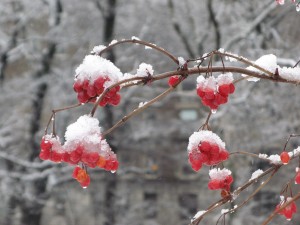
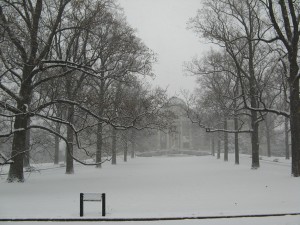
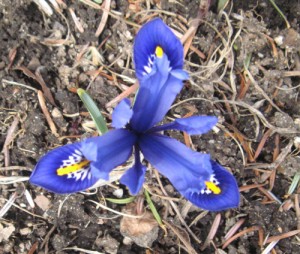
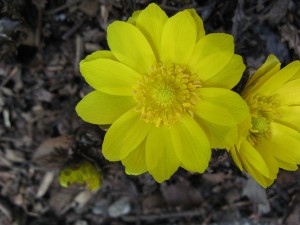

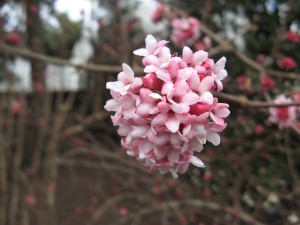
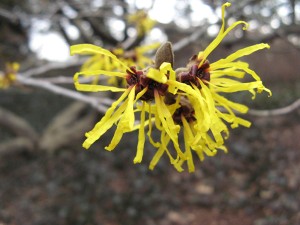
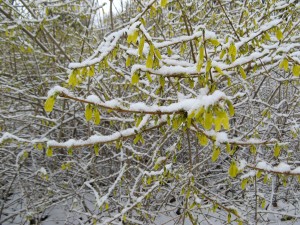
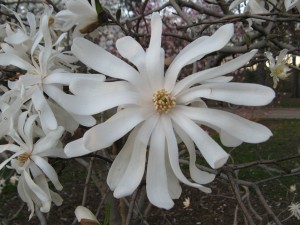
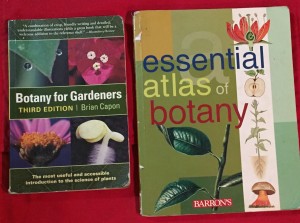
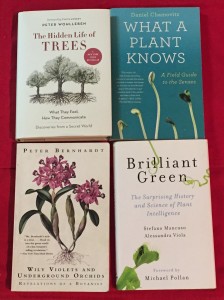
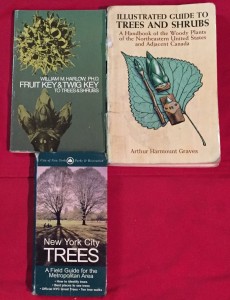
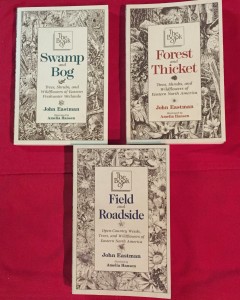
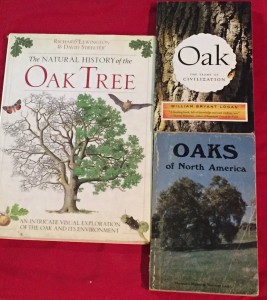
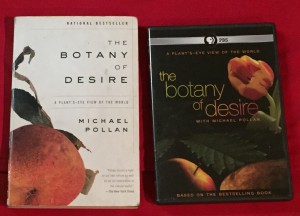
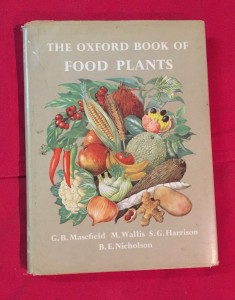
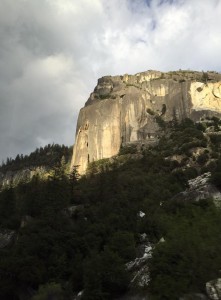

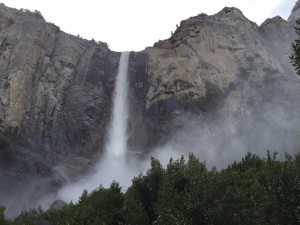
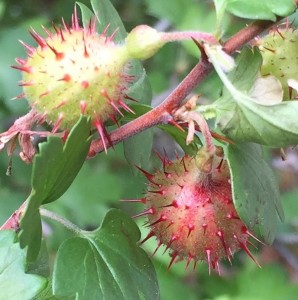
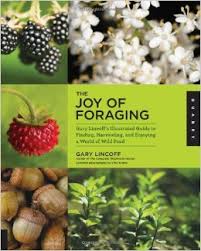
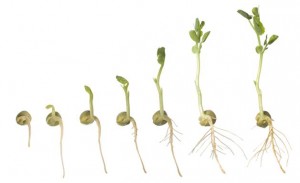
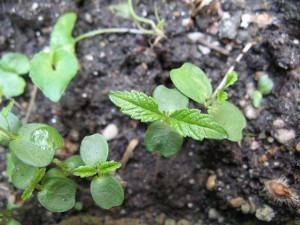
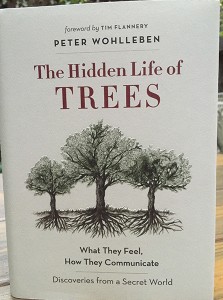
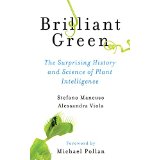
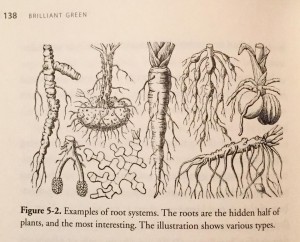
![endomycorrhizae-ectomycorrhizae.png new_thumb[13]](https://garylincoff.com/wp-content/uploads/2013/09/endomycorrhizae-ectomycorrhizae.png-new_thumb13-300x174.png)
